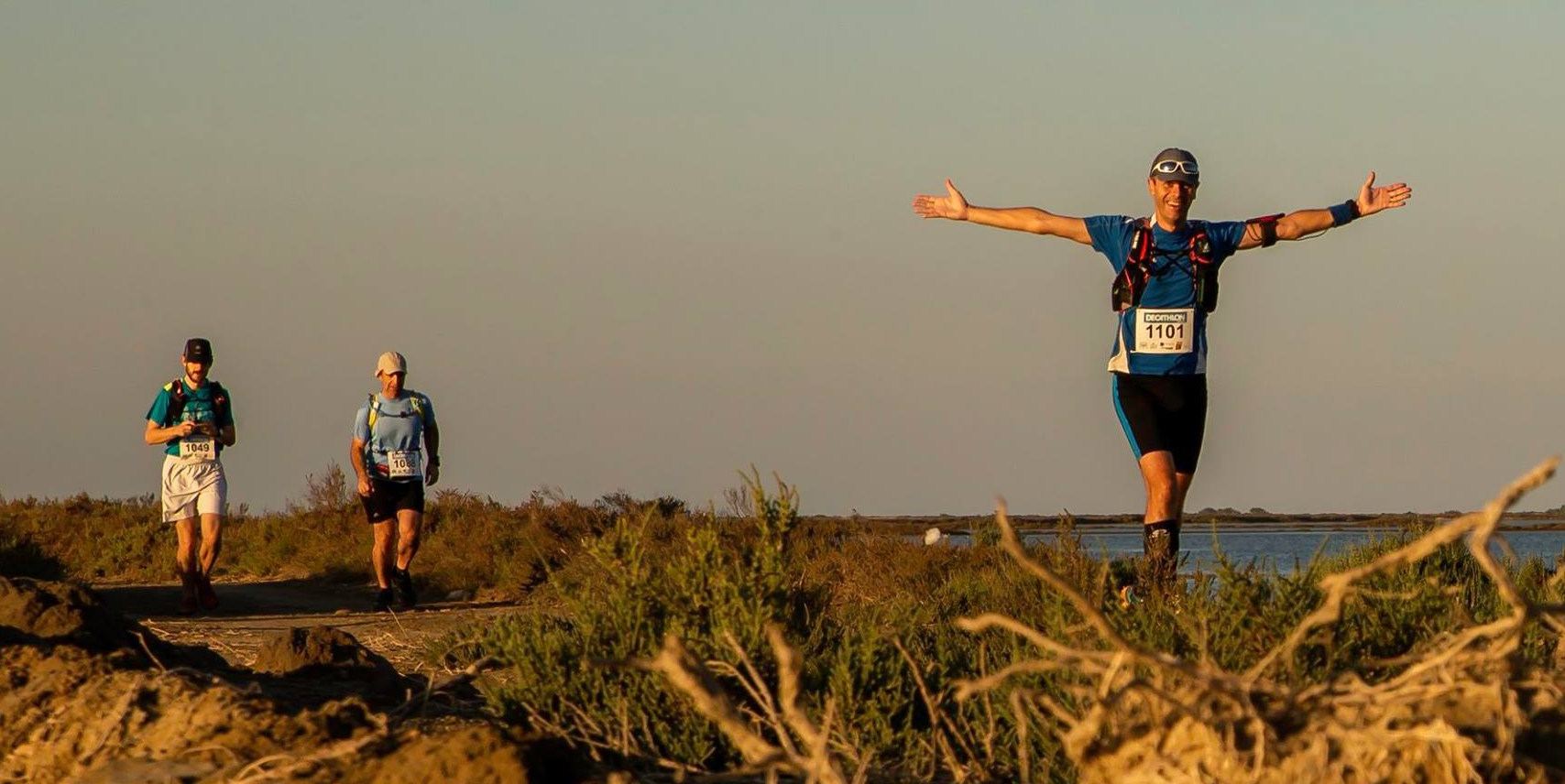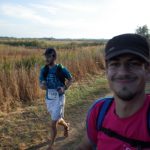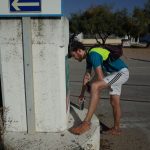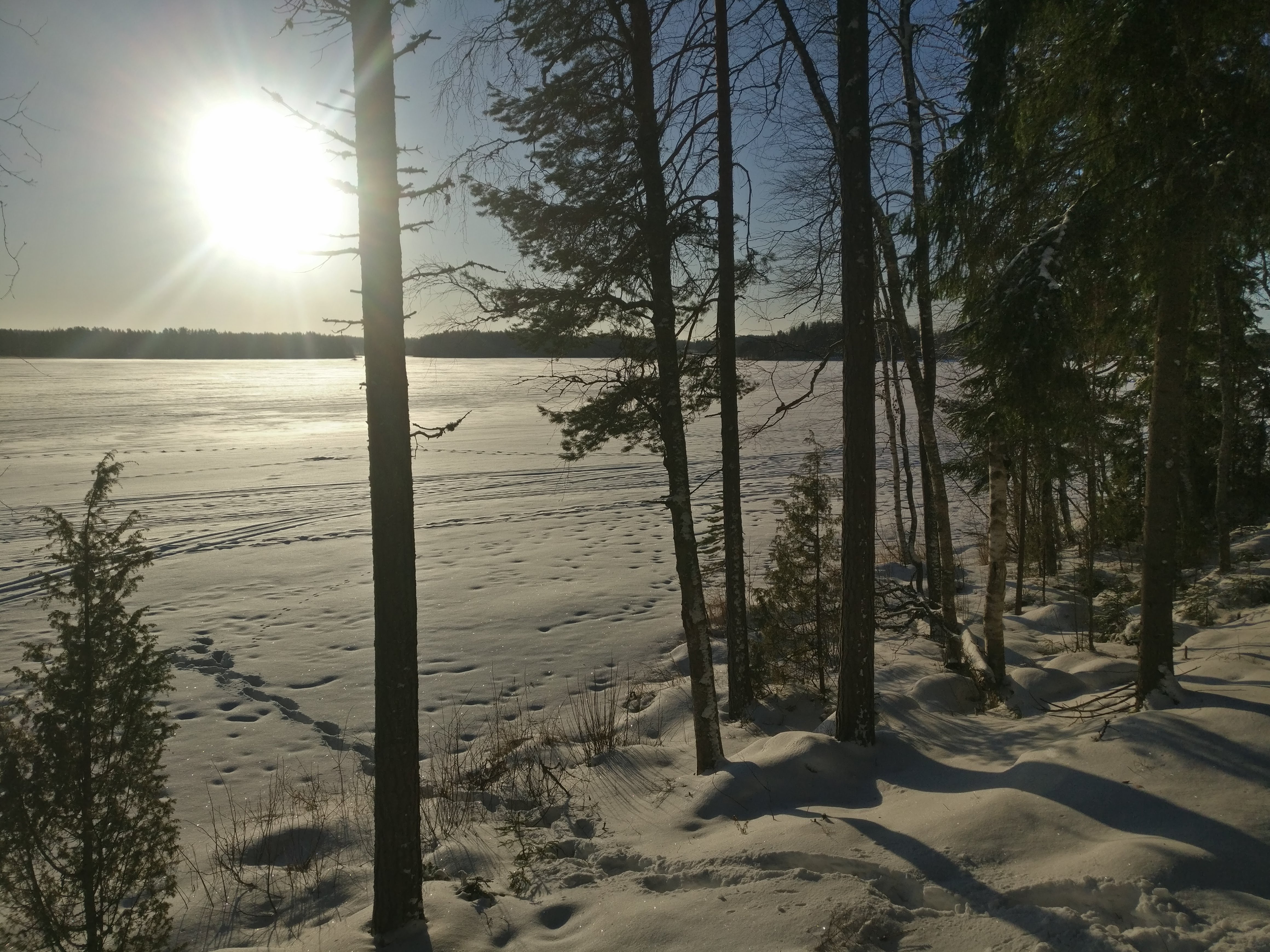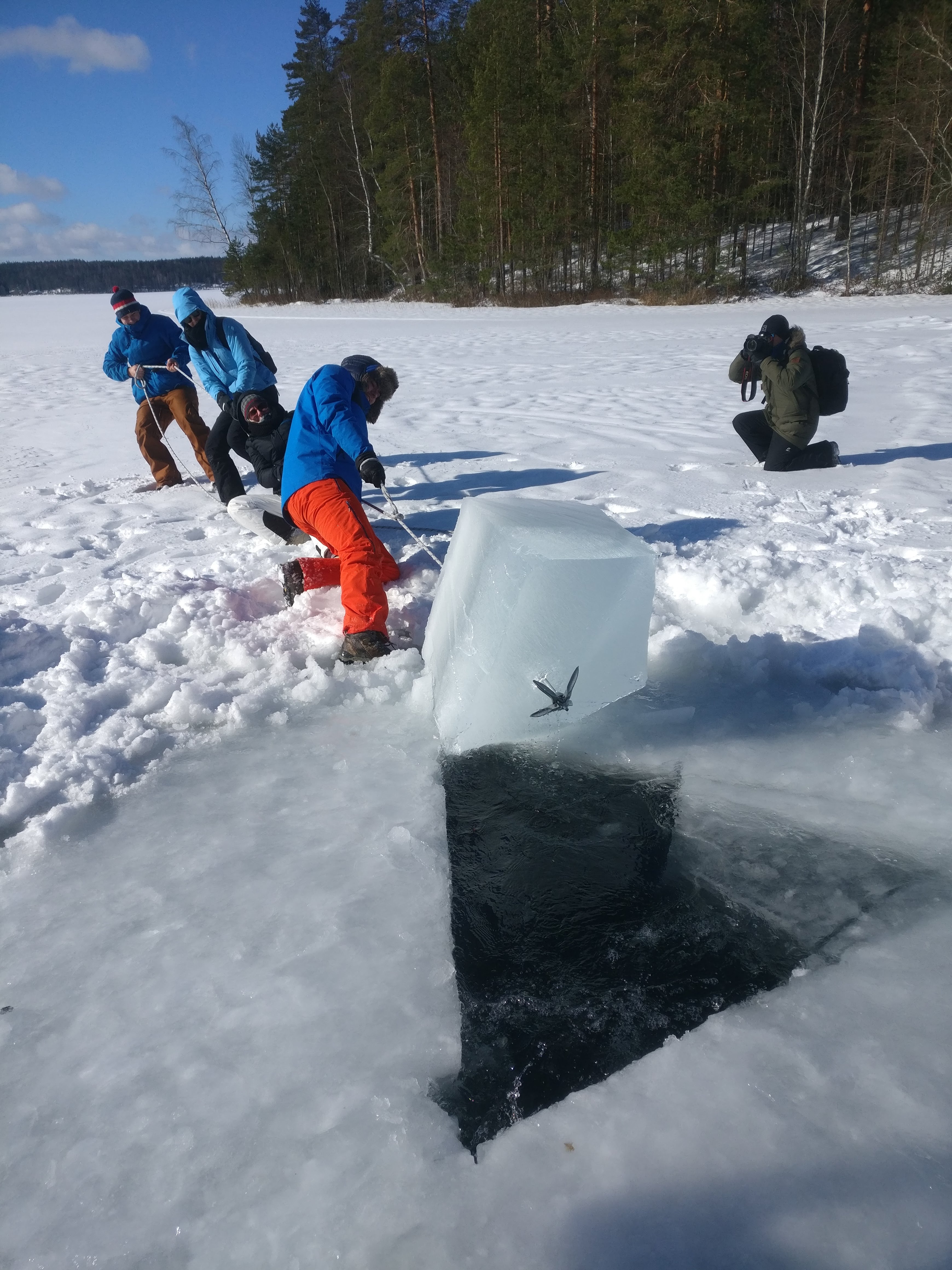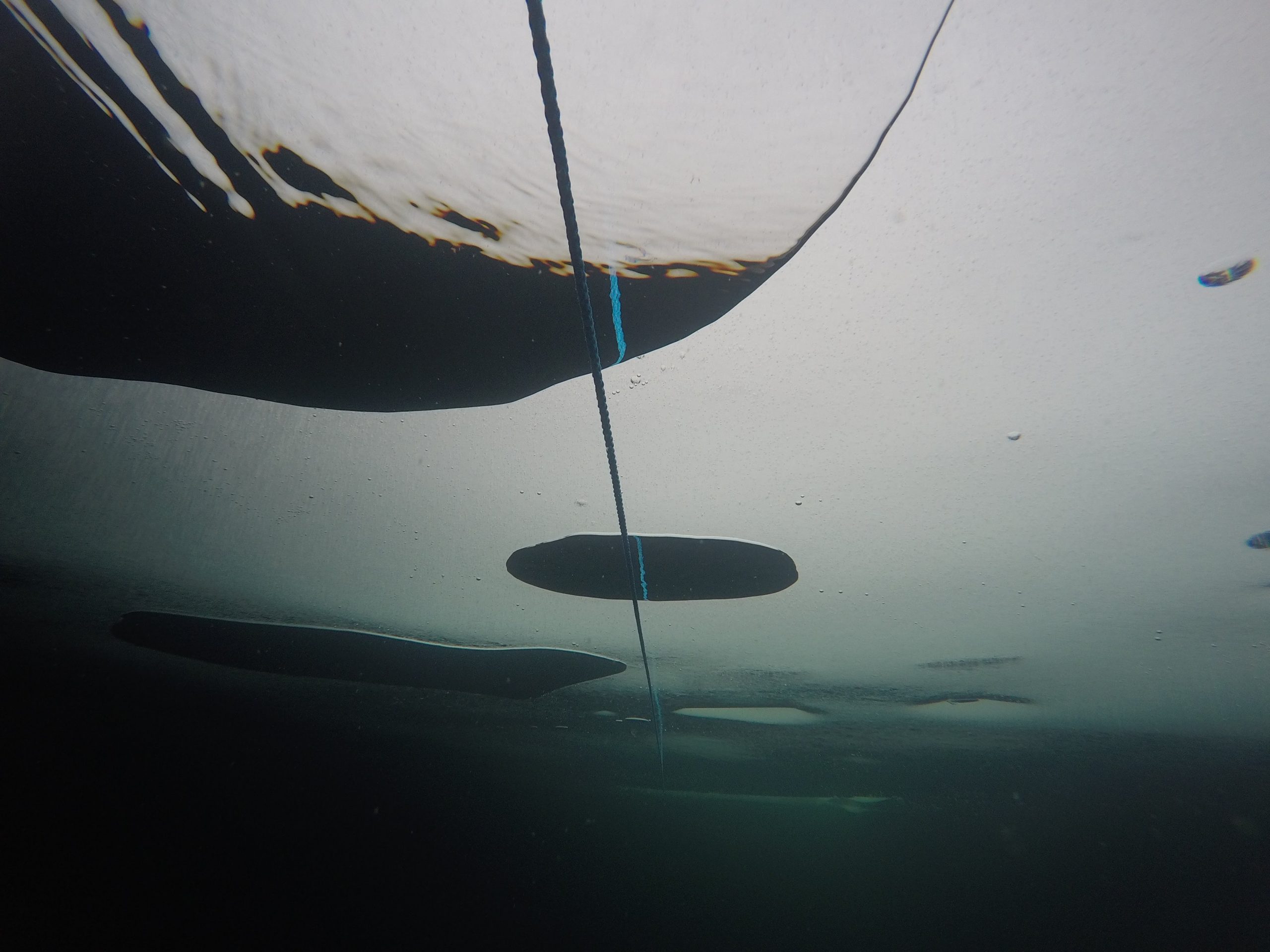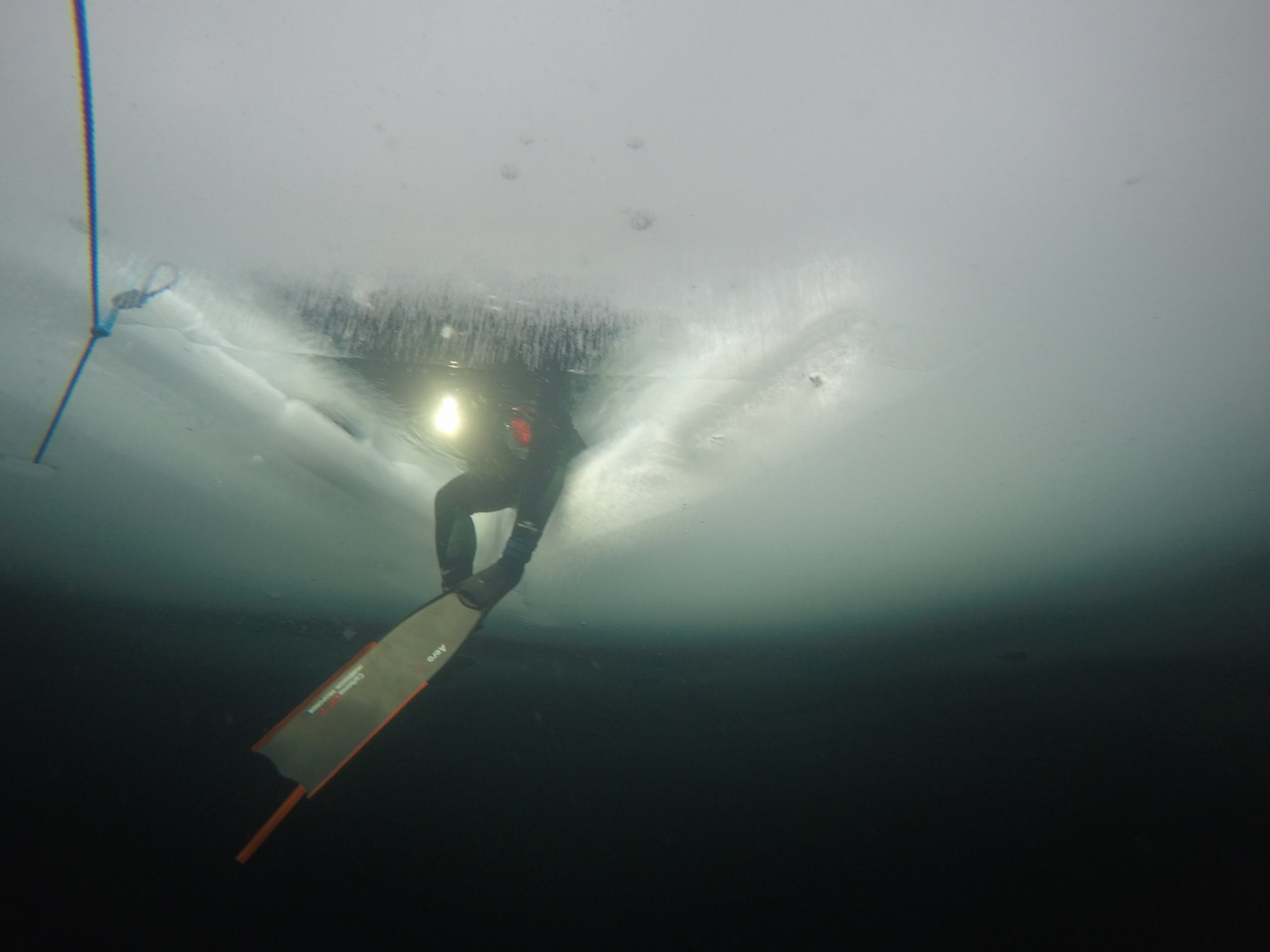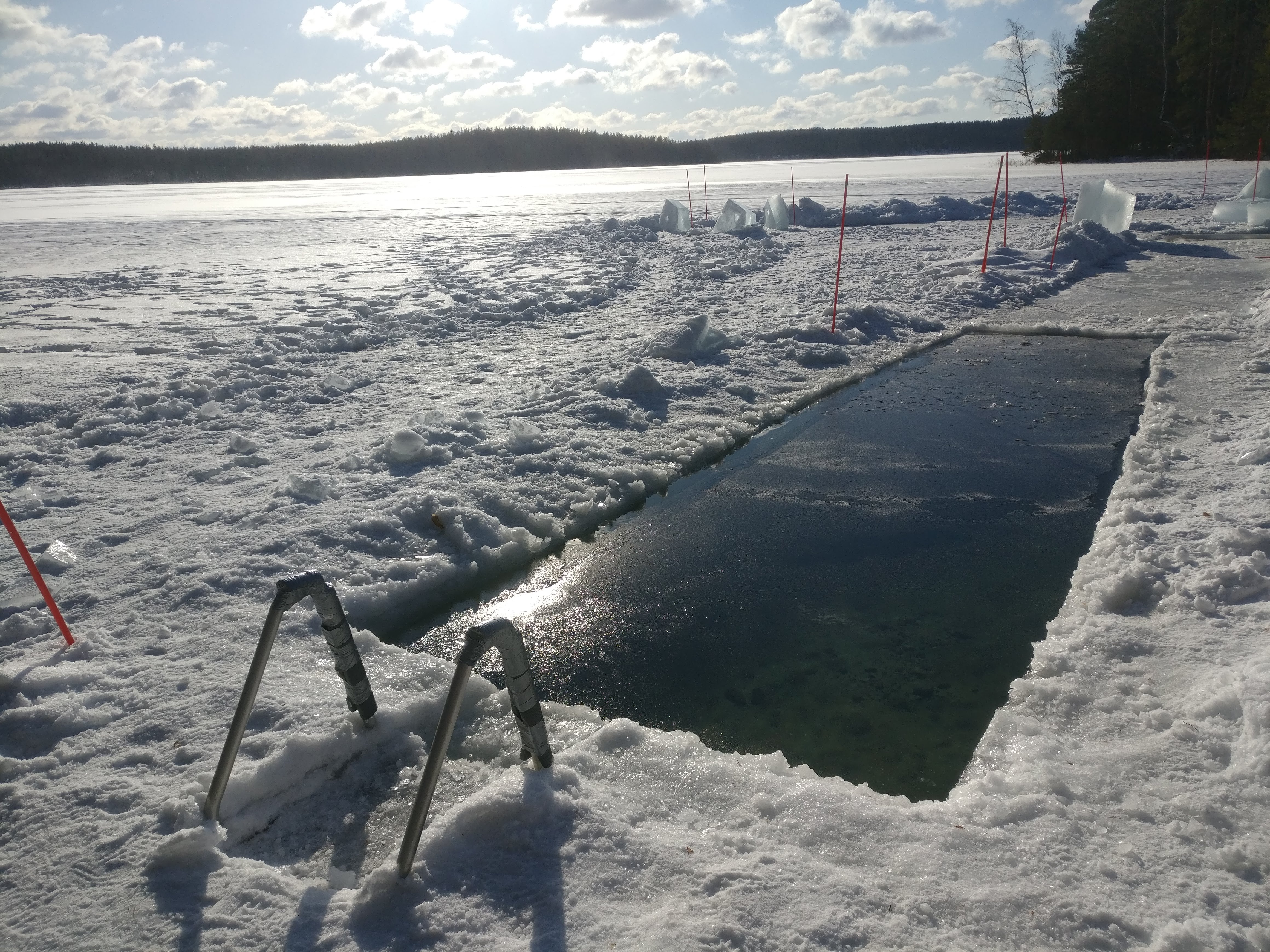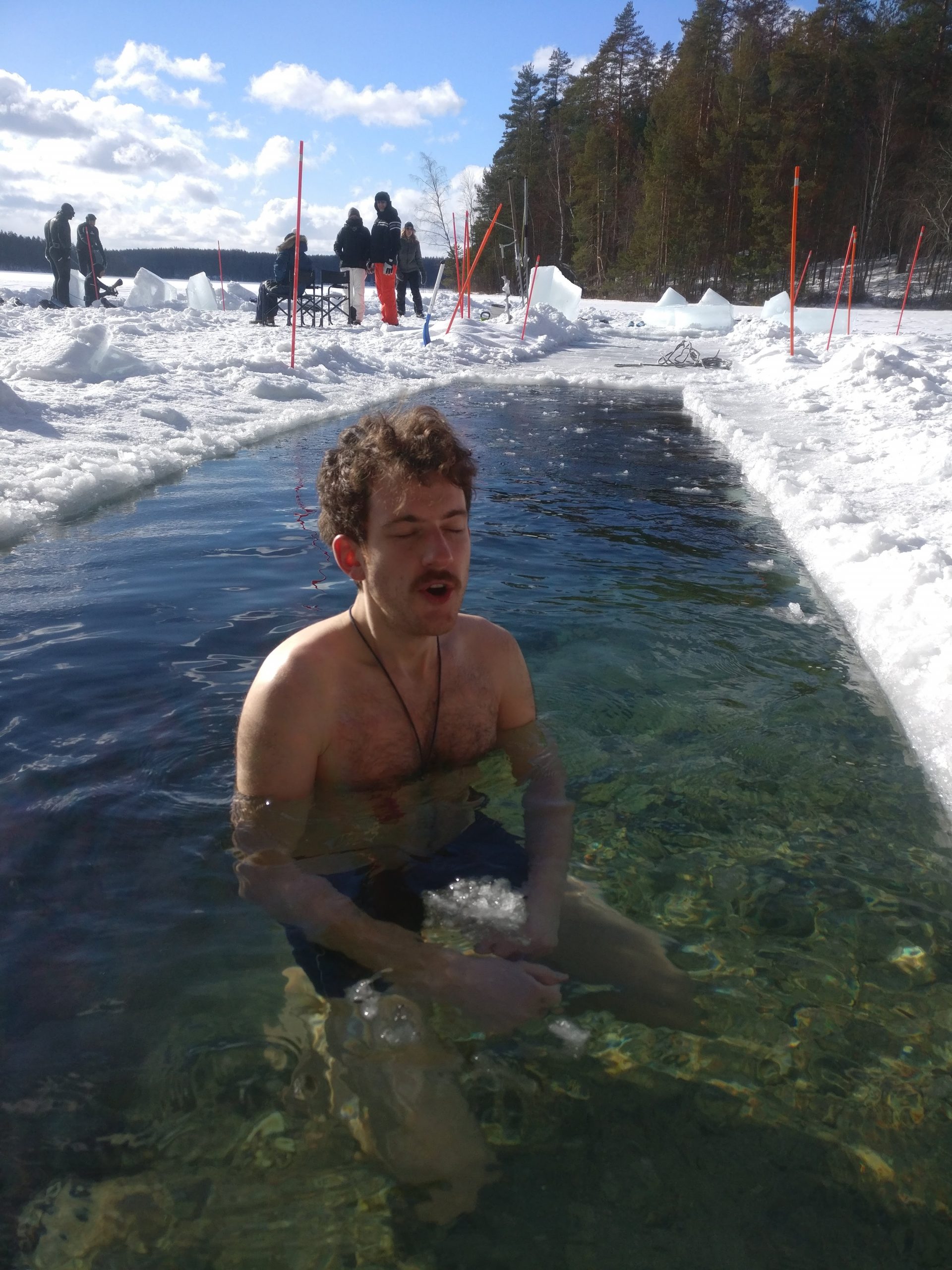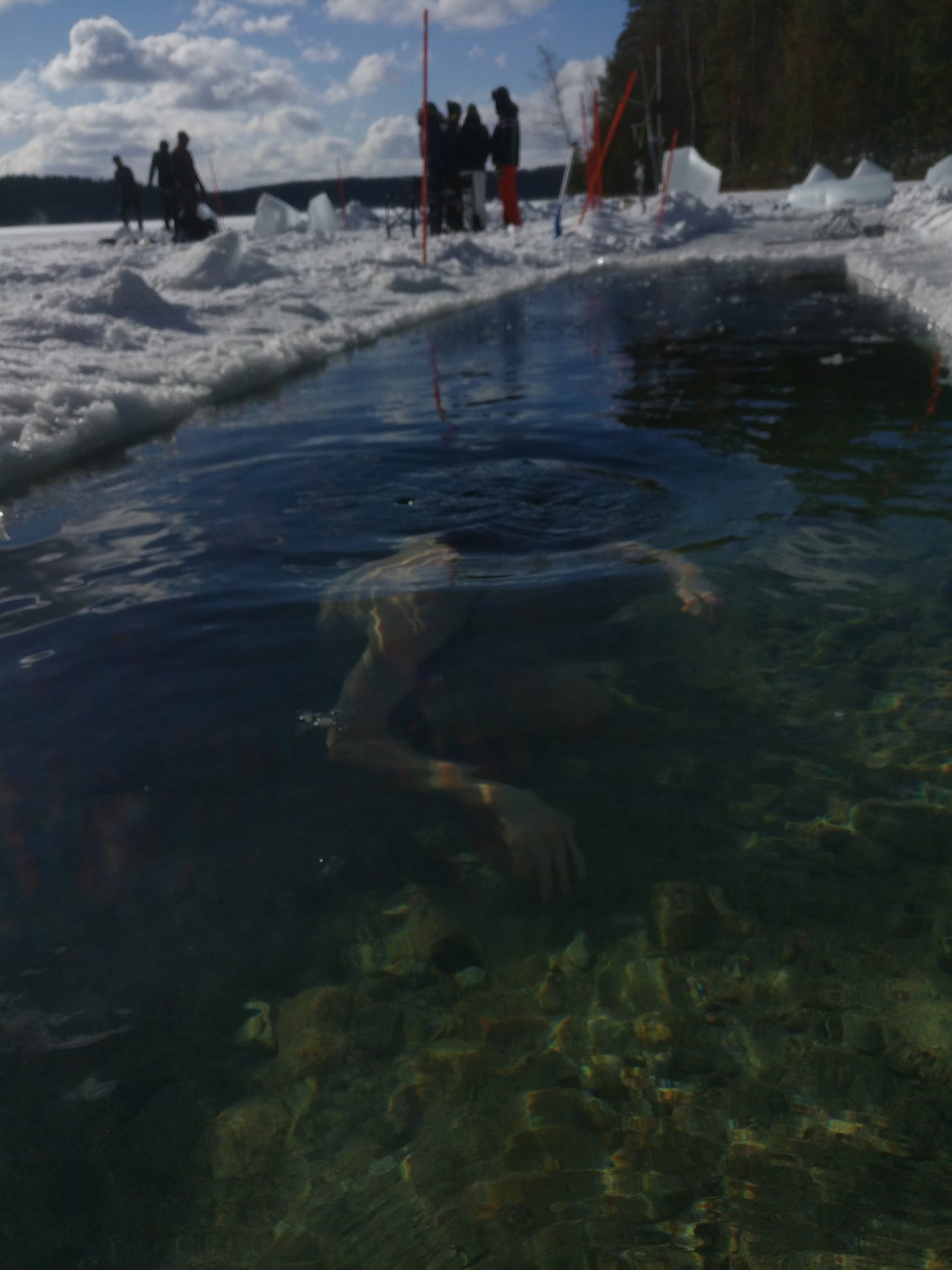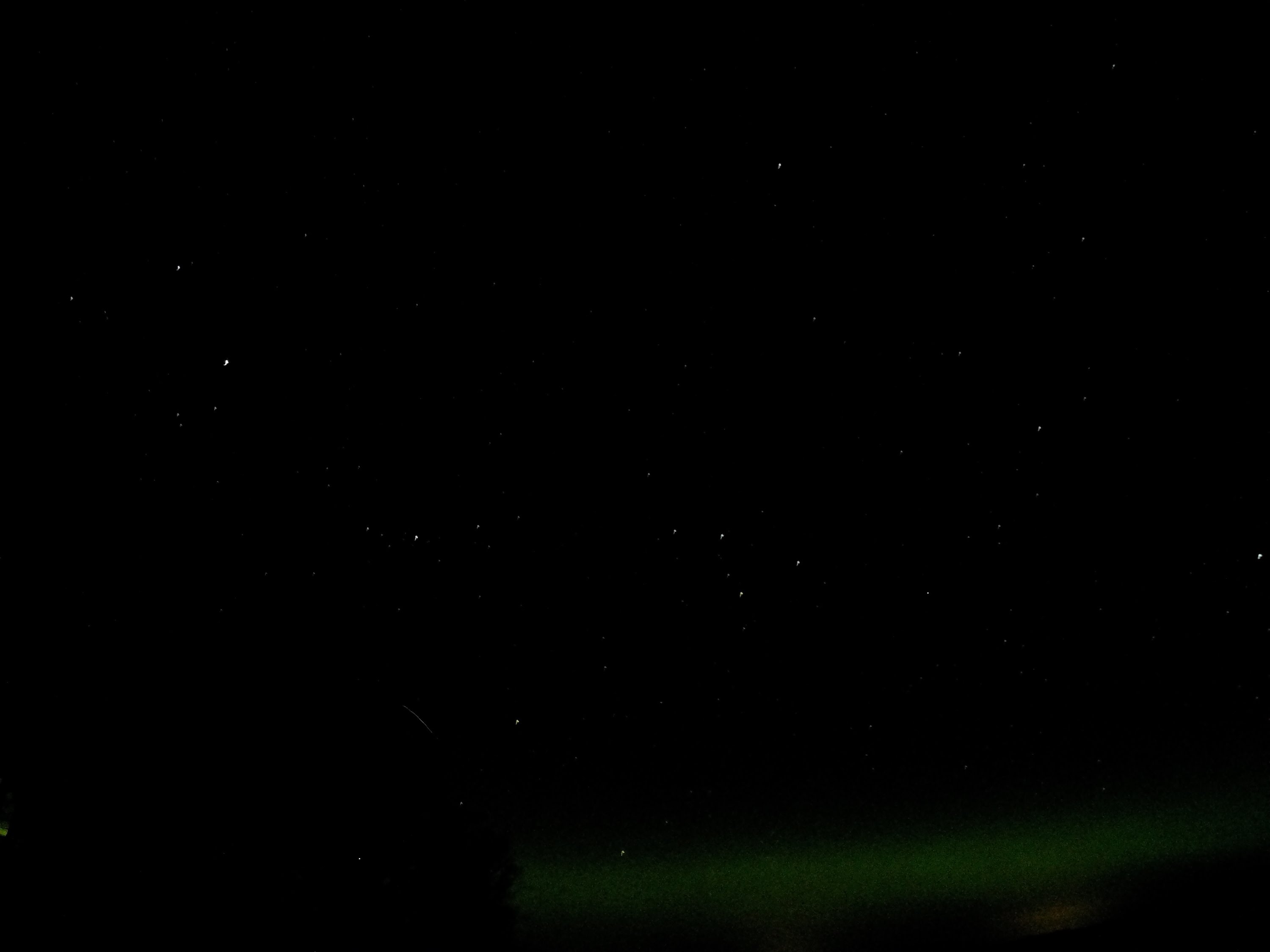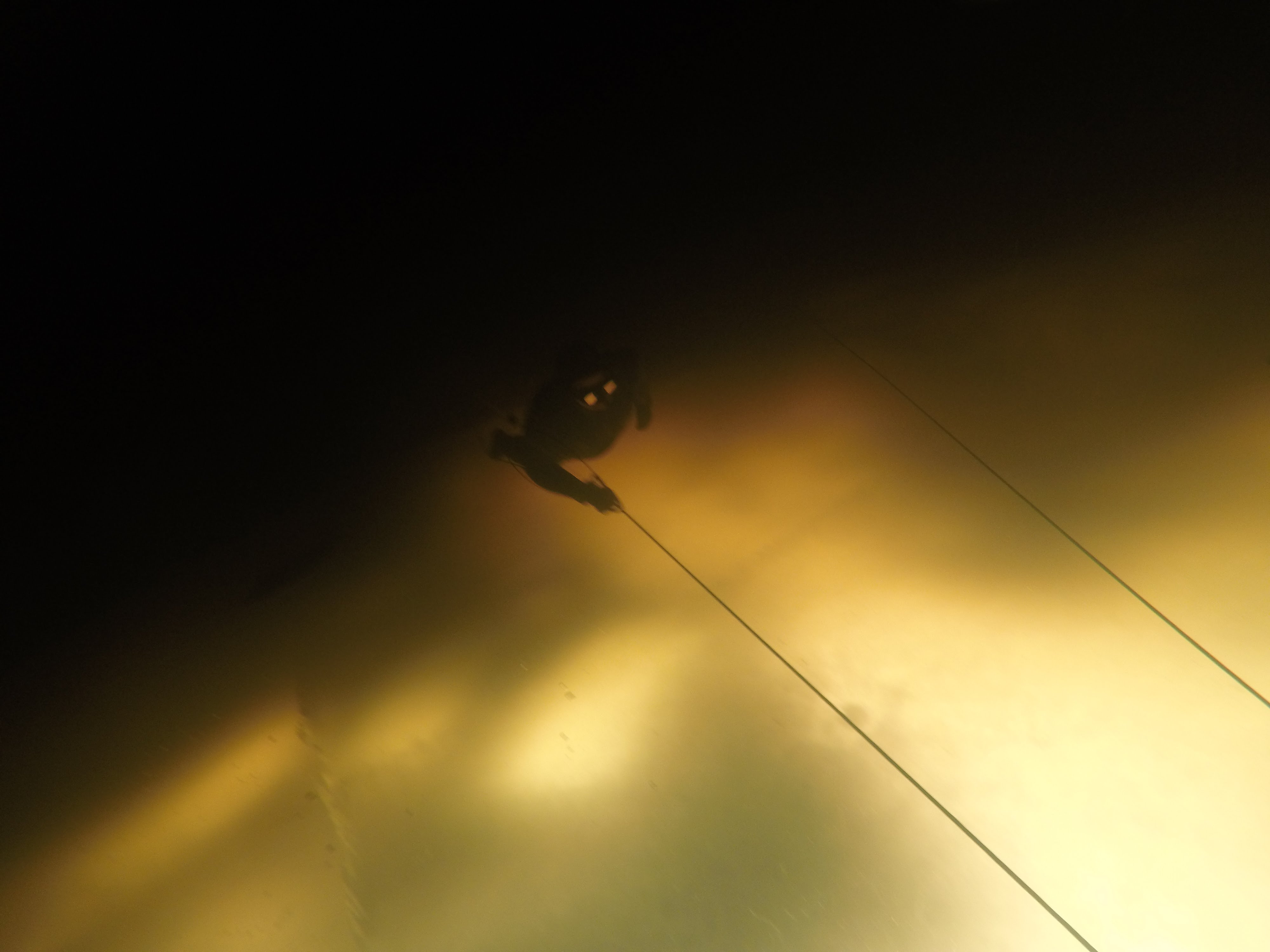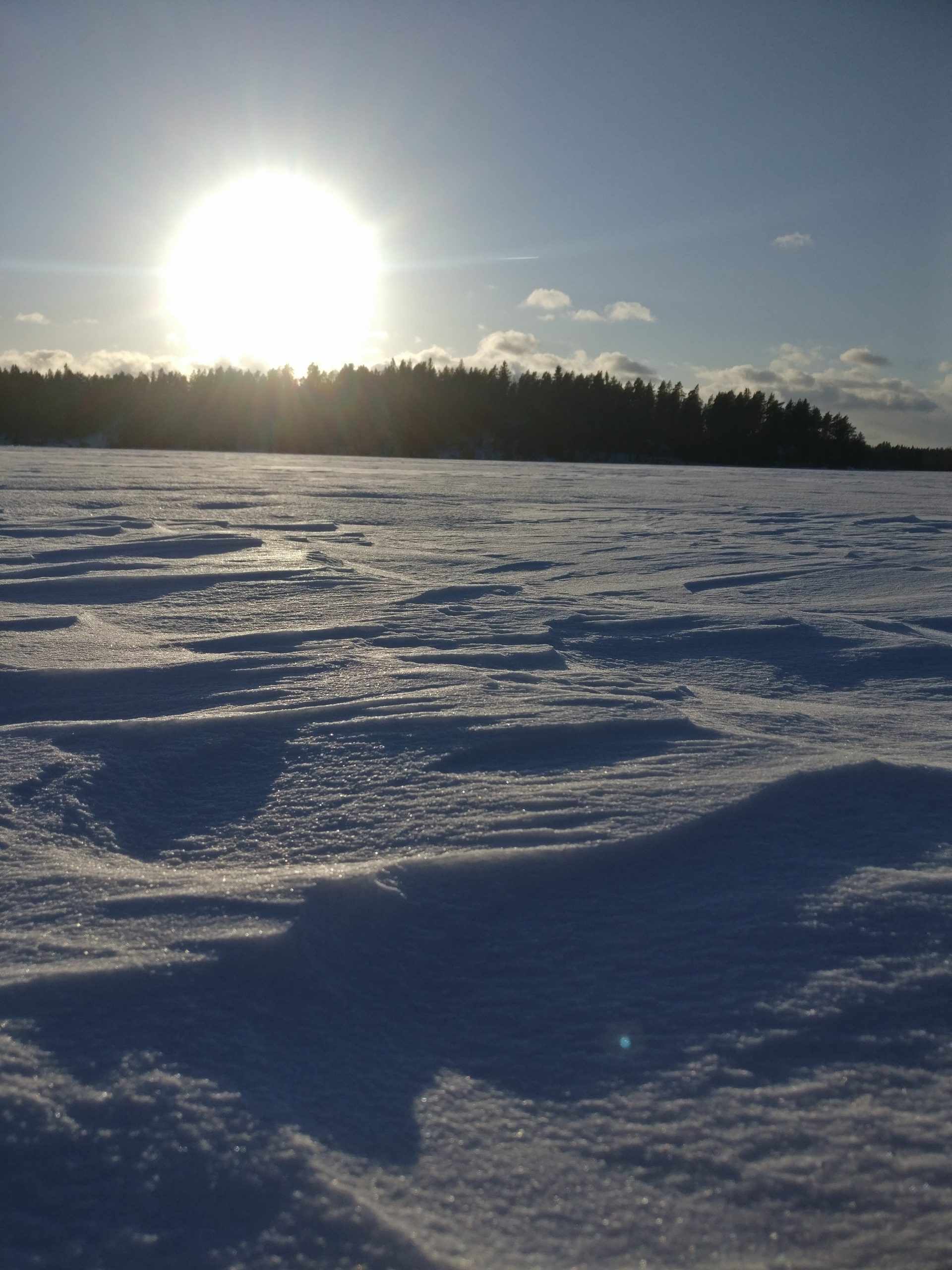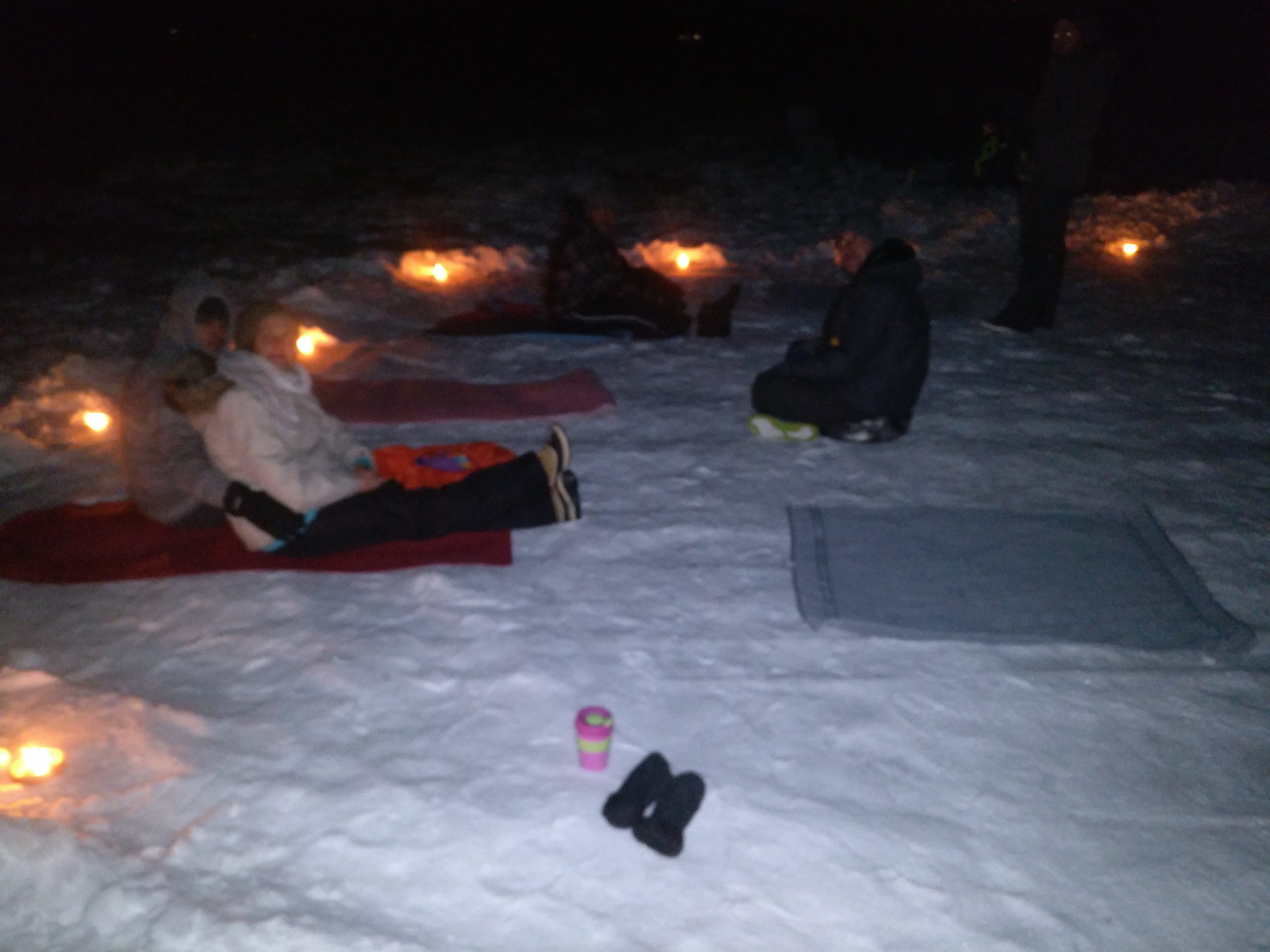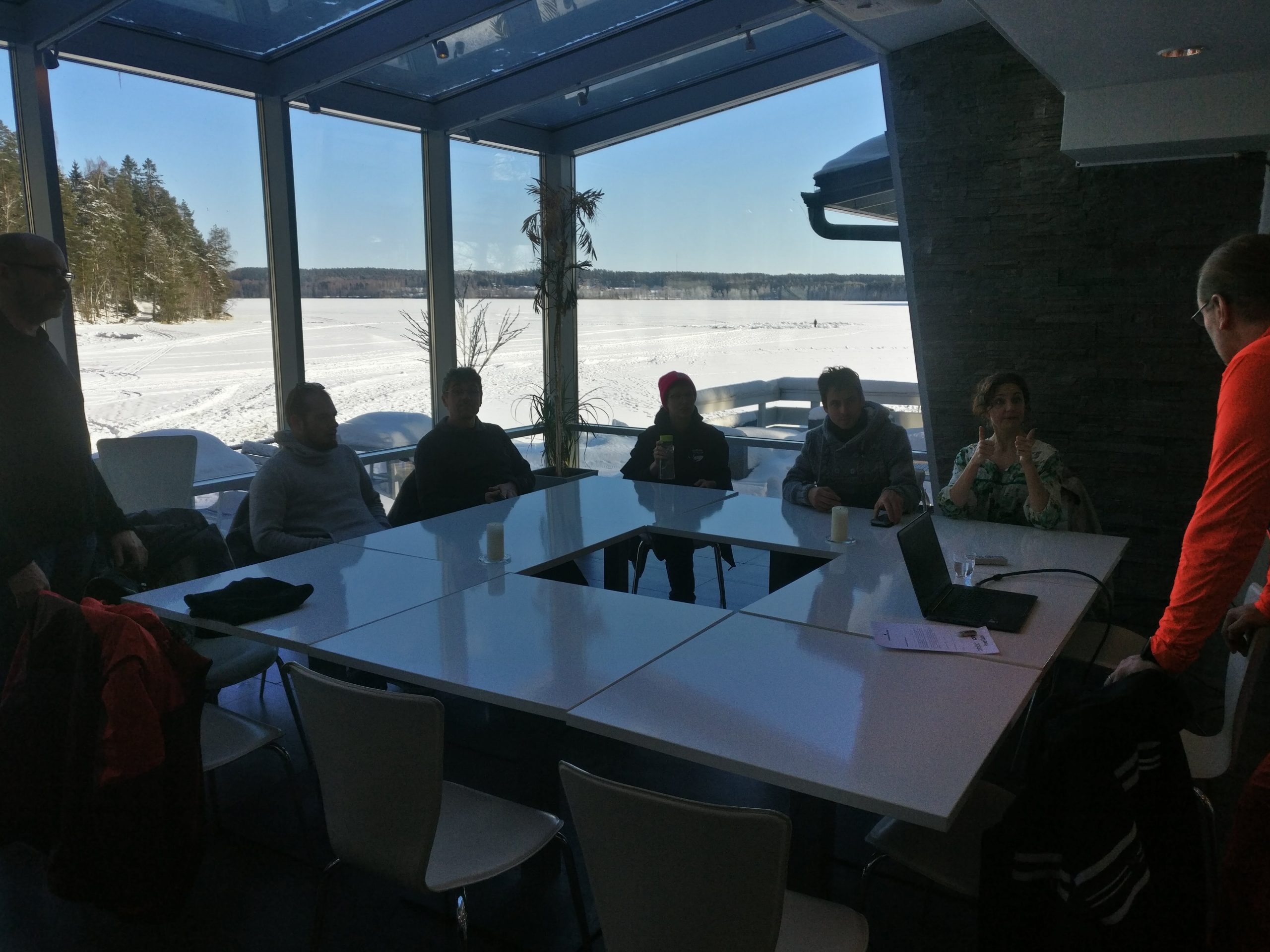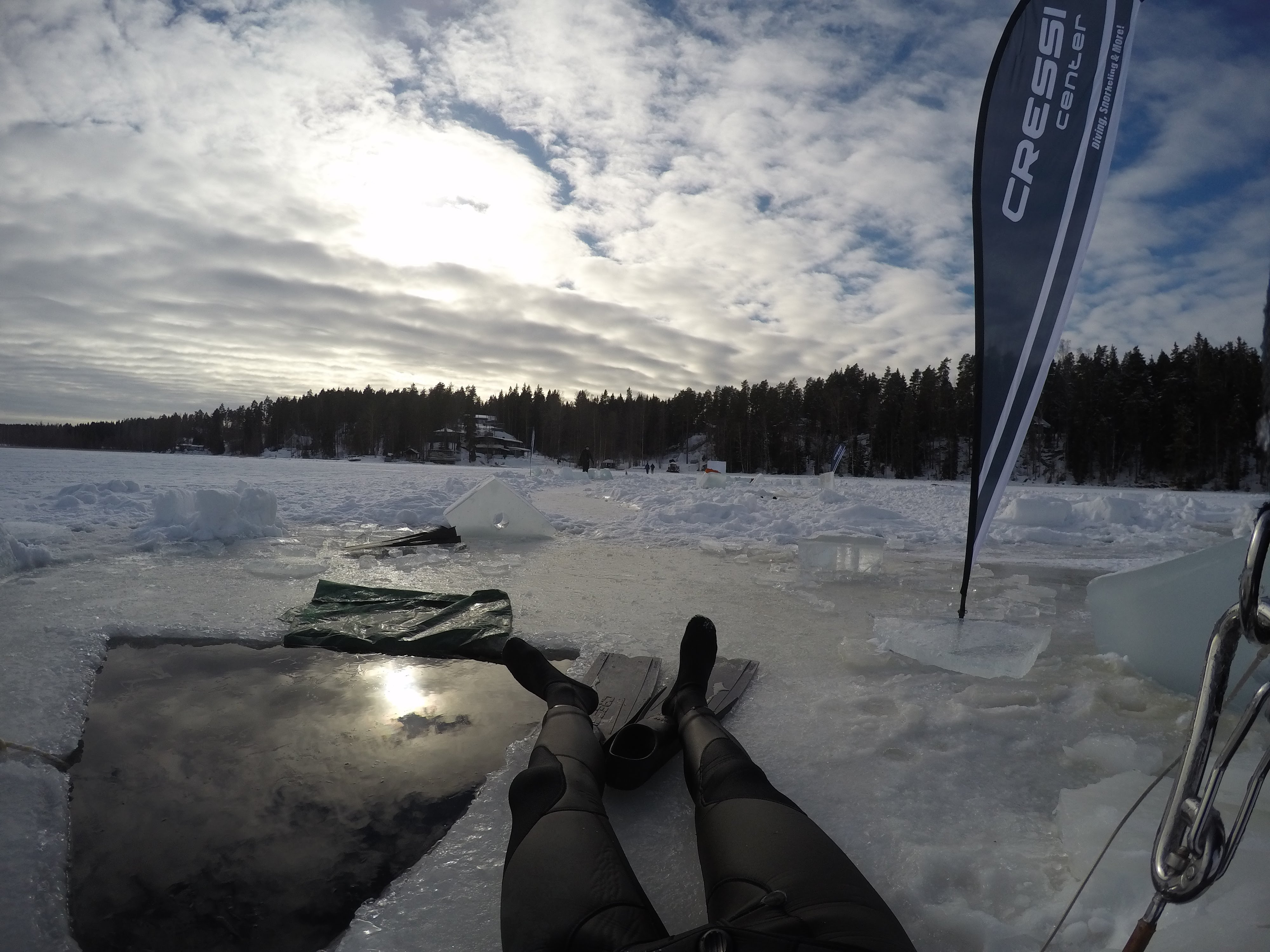We reach the starting line as the sun is still asleep.
Camargue, South of France, is not as cold in September as I feared and I can leave my running pants in the drop bag – the lighter my backpack will be, the easier the race. I spent quite some time the previous night optimizing it, filling it with various cereal bars, sunscreen, seeds to spice up the drinks…
My backup huarache sandals broke yesterday evening, so my Five Fingers shoes will have to do all the way.
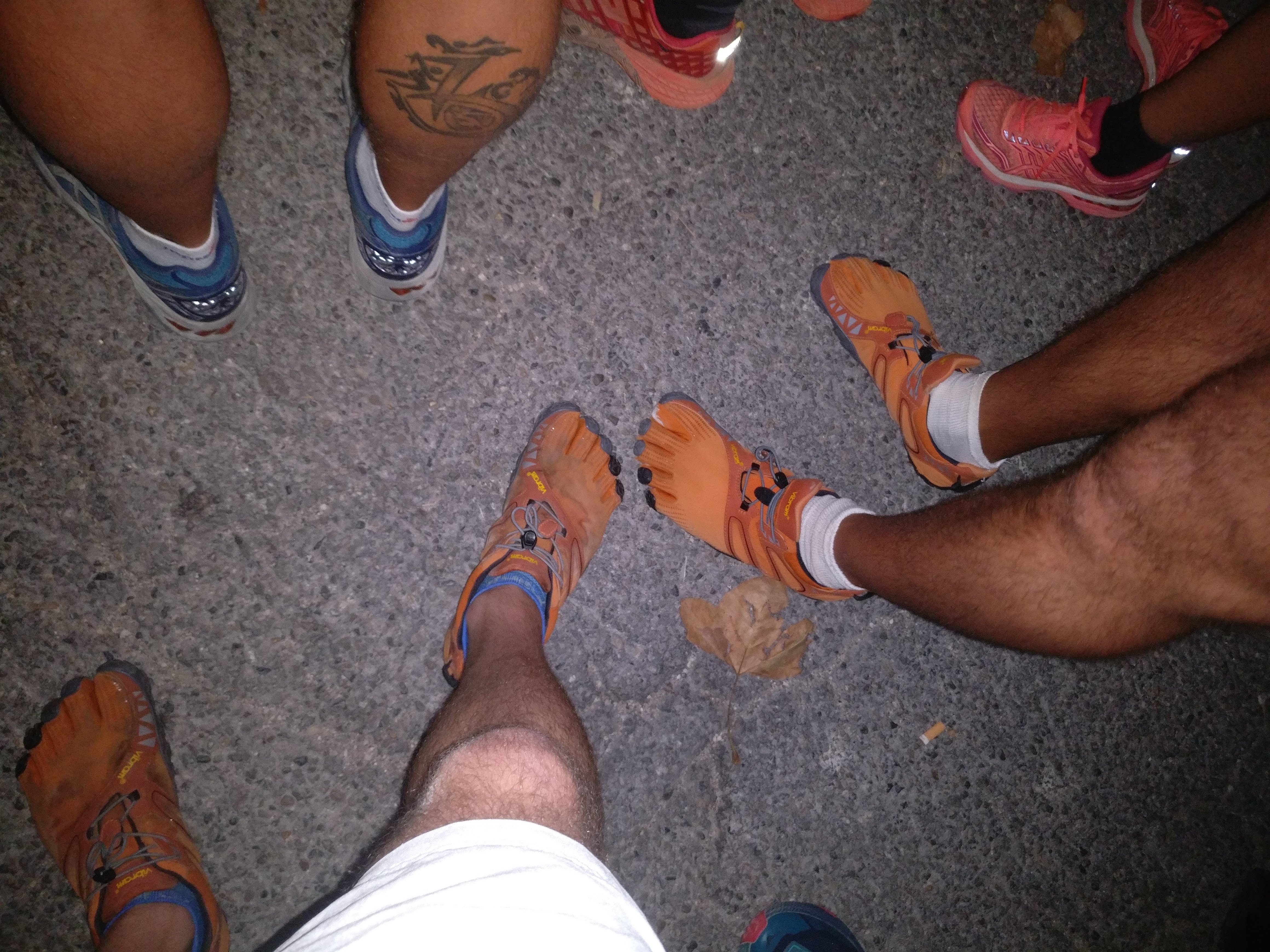
In the bus I ate a bit of bread, slept and spoke to a few other runners: most have already done the distance (or more) and they usually aim at a longer time than me. A bit of a shot in the dark, I’m hoping for 12 straight hours of running, which would make me arrive at 7 pm. My longest race so far was during training, 58 km in 6 hours 22.

After a short speech on path marking, at 7:05 am, we jump across the starting line.
0 to 20 km: warming up
The start is enthusiastic and a bit fast for my taste. I read that one of the classic ultra rookie mistake is to go too quickly at the beginning (which as it will turn out, I am still going to make!) so I fall down to the back of the pack. I’m not racing against anyone else, goal #1 is to finish.
After a few kilometers in the village we reach a dirt path and quickly get into a salt marsh (the place where they dry sea water to extract salt): in front of me is a line of runners and on both sides of the road is the marsh.
The sun starts to rise, we are surrounded by water, a beautiful start!
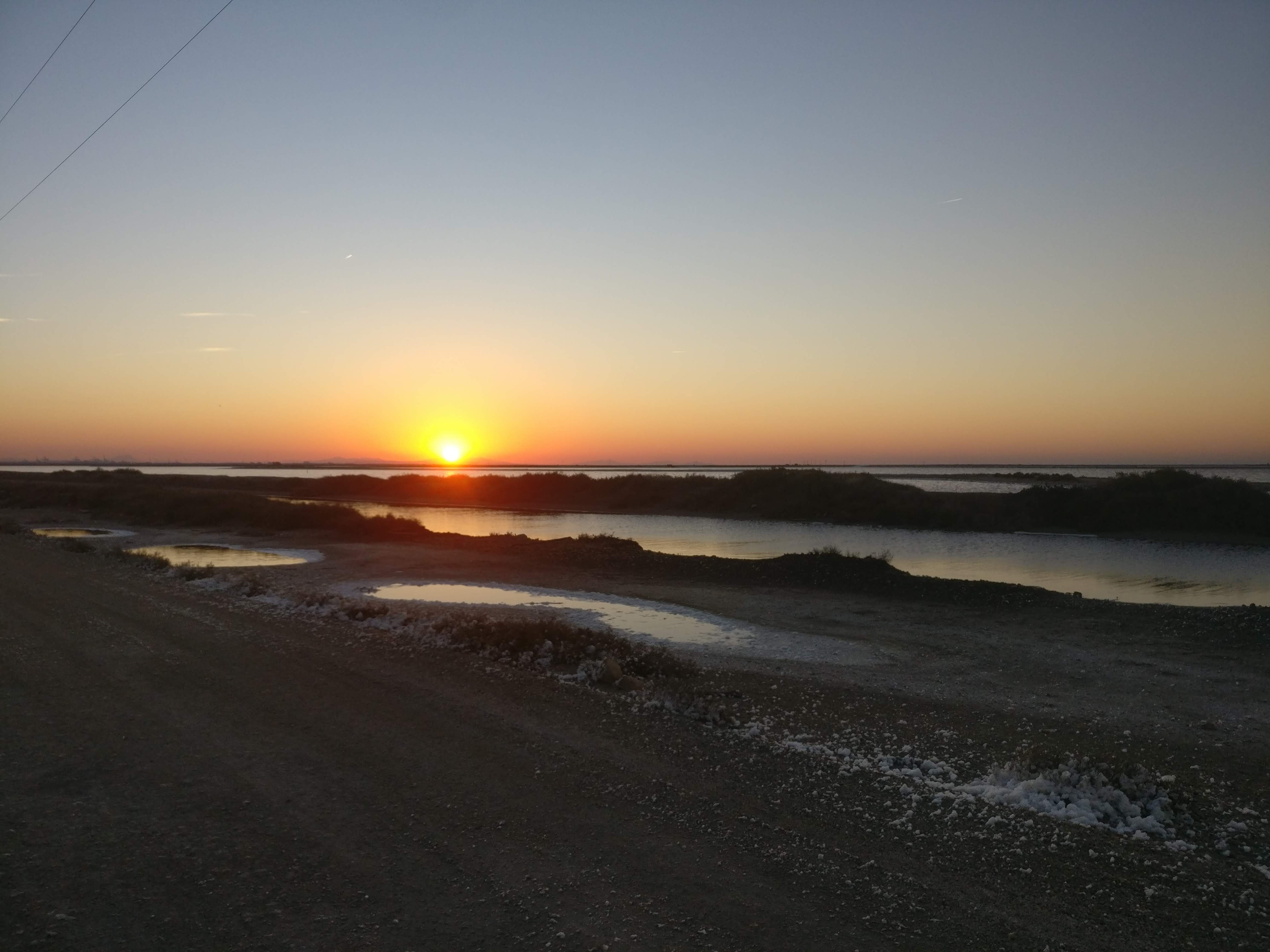
One runner has adopted my pace and we run alongside. He says he hasn’t trained a lot but has done the race before, he just wants to improve his previous time and finish before 10:30 pm. Last time he crossed the finish line, went to his car to go home but immediately fell asleep inside until 2 am, then swore he would never run it again. Runner’s promise…
We don’t speak a lot but we both can use the company, seems it’s going to be a long day!
The wind picks up as we go through long straight lines and I have to run harder to keep my target pace of 9 km/h – definitely my first mistake, I should have slowed down (constant energy output is the goal, not constant speed).
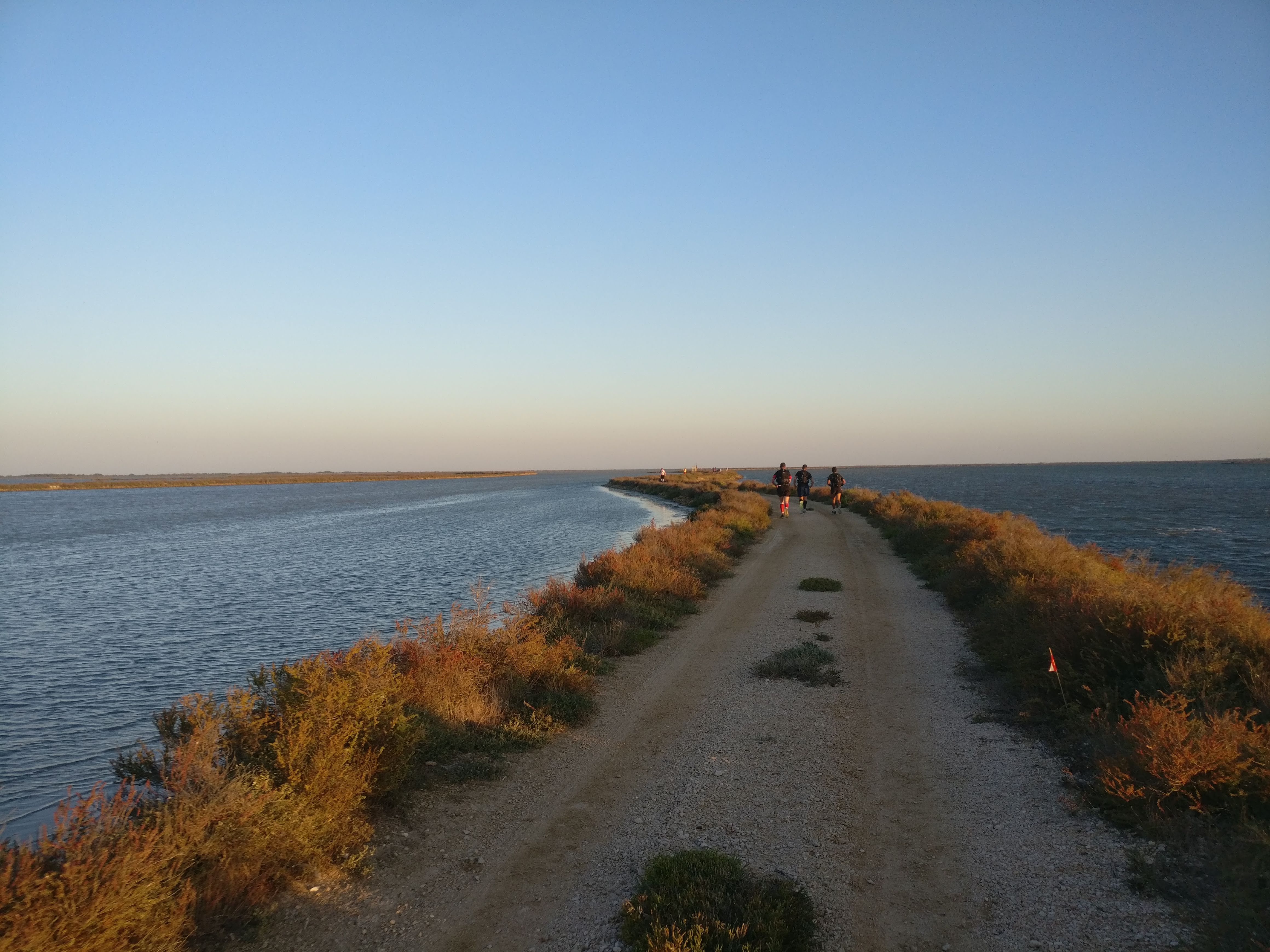
Getting out of the salt marsh, we get to the beach and run a 4 km stretch in the sand. The sand is wet and we need to push harder to move, combined with the wind it takes quite some efforts to run. Since we feel strong we soldier on – the speed is still slow so we should be good, right?
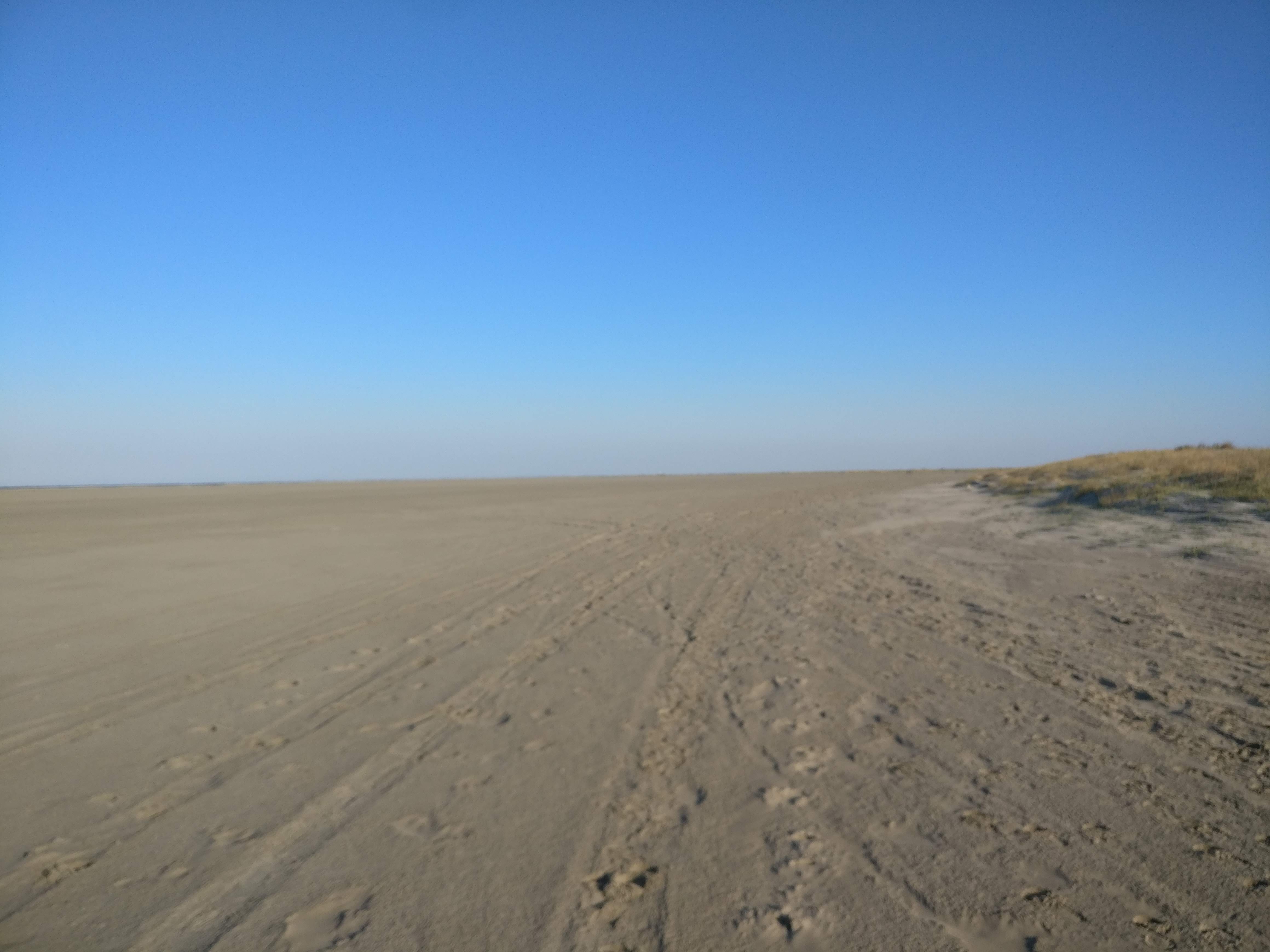
20 to 40 km: this ultra thing is going to be easy
Out of the beach and back into the salt marsh, then on the beach-side where we cross path with many bikes, horses and people walking. It’s nice to see some animation and the landscape is beautiful, the wind starts to fall, the sun is up and not hot yet…
A great day to run!
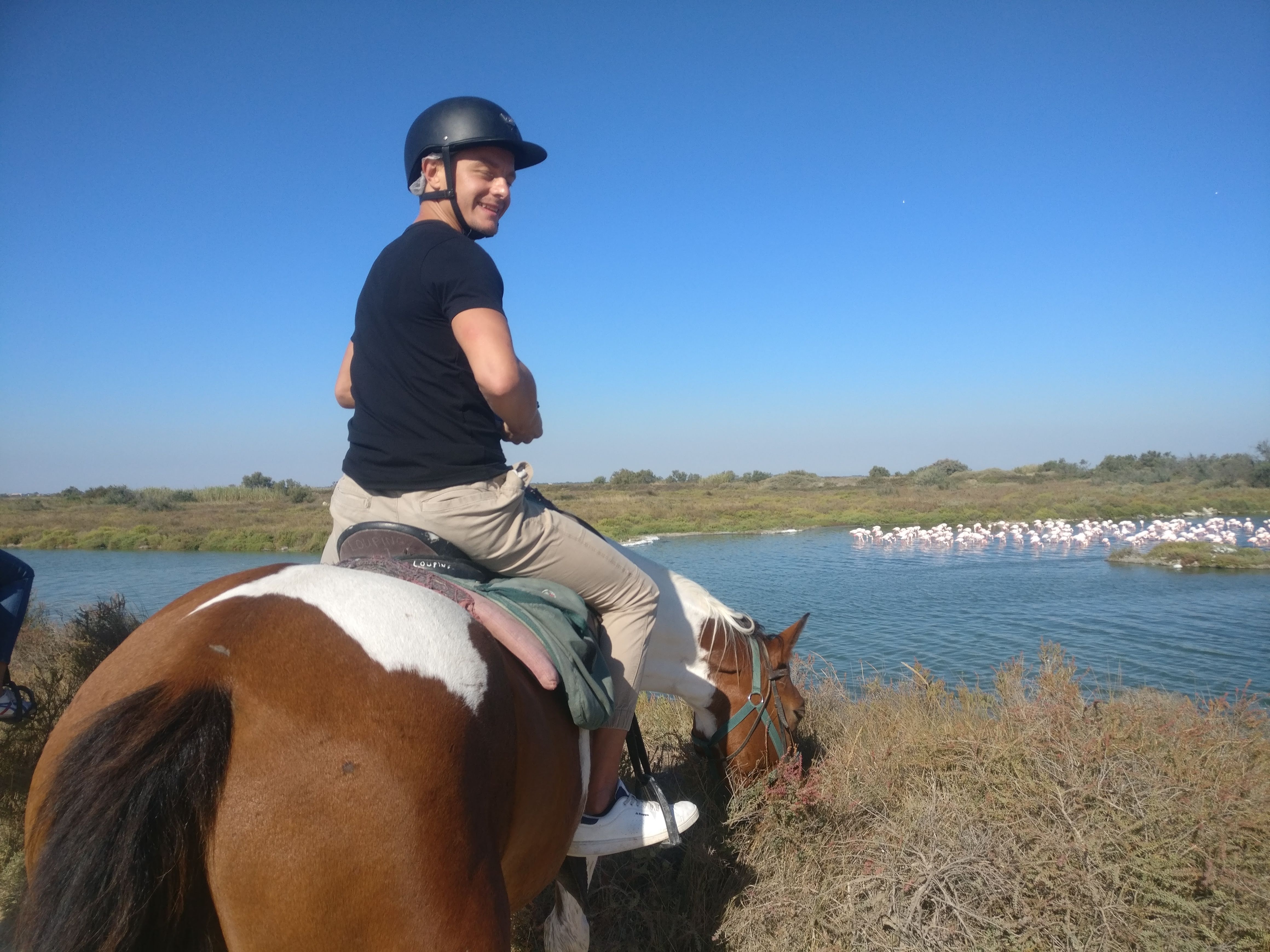
We started 3 hours ago but time seems a bit meaningless, I still have (at least) 9 hours to go. The end goal feels very abstract which makes it quite easy to forget, allowing to just focus on enjoying the run, here and now. Interesting effect!
After other looong straight lines we arrive at Saintes-Maries-de-la-Mer where at km 33 is the first big aid station. My running buddy is going to stay and enjoy some massages, I feel great so I just zip through and I’m out 2 minutes later, after thanking the volunteers and refilling my bottles.
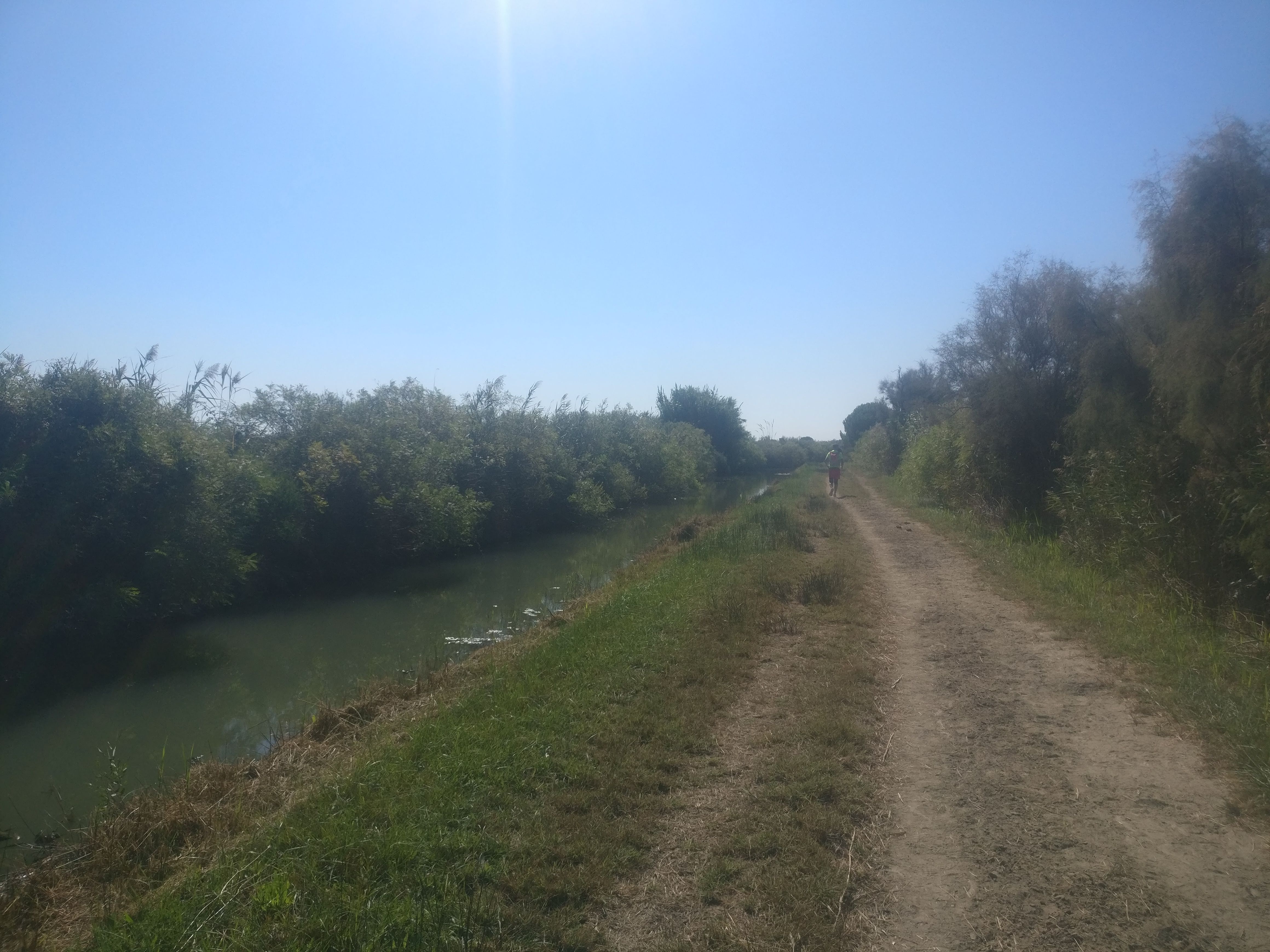
I feel really good and almost want to speed up – which I don’t, fortunately! If I had been more observant I would have noticed that the sun had been heating up for the past hour and though I had a full-on « runner’s high », my legs were starting to tire.
For the moment though I can stay oblivious to all that and happily focus on the grassy trail and the pleasant sensations – we’re running on a sunny day!
40 to 60 km: getting slowly cooked
Ok, now I definitely feel that my legs are getting heavy. I remind myself that this is where the training kicks in: no need to panic, an ultra is all about running on tired legs. The feeling came quite late already, trying to predict how the legs will feel 60 km from now is useless.
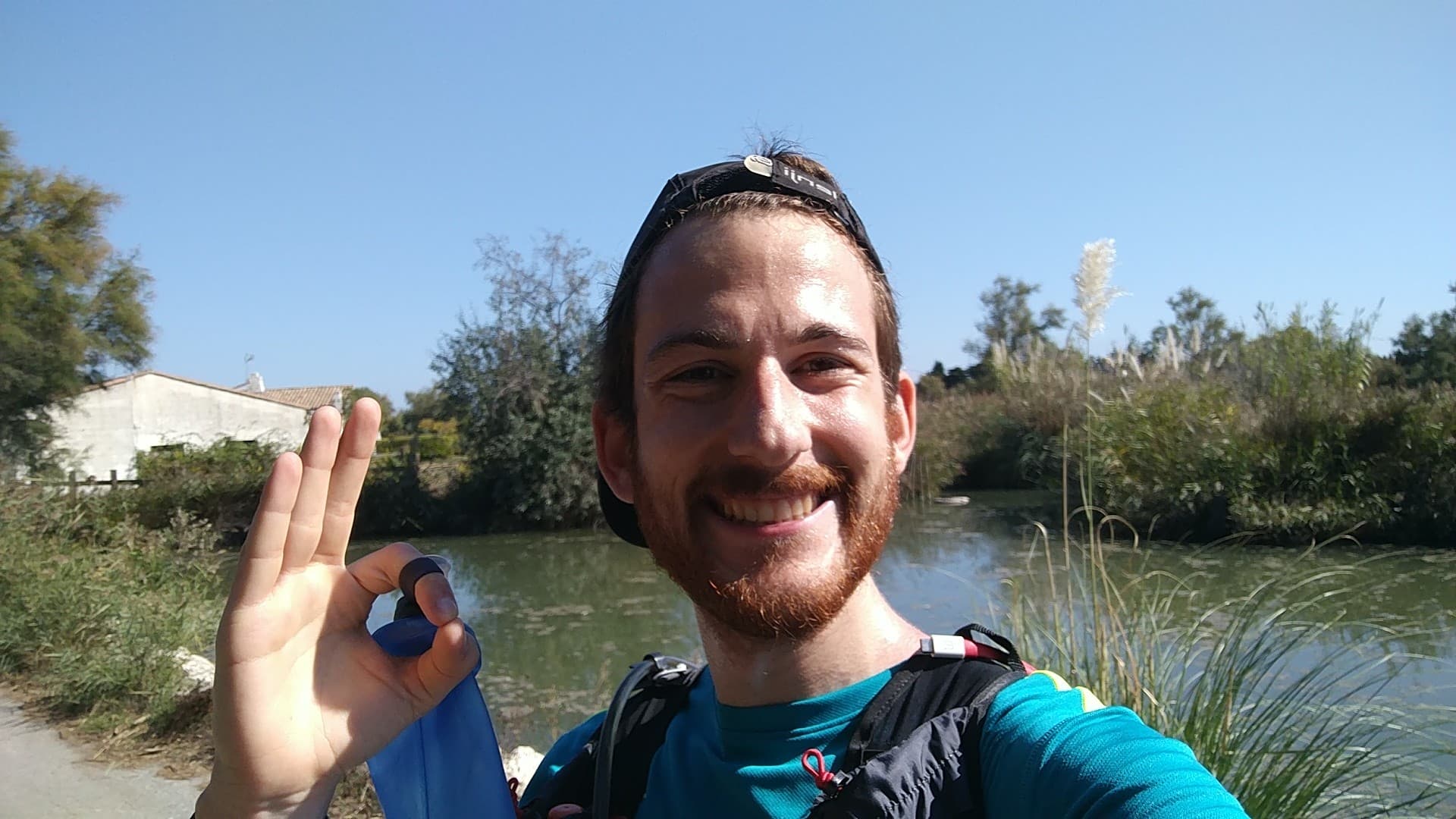
We keep running, cross rivers, I make some iskiate (by adding chia seeds and honey to my water bottle, a drink described in Born to Run – I’ve read the book again the past week to get me in the mood, it worked!) which makes a nice change from plain water.
It also helps to carry that second bottle, I’m now drinking a full liter of water in the 10 km between aid stations.
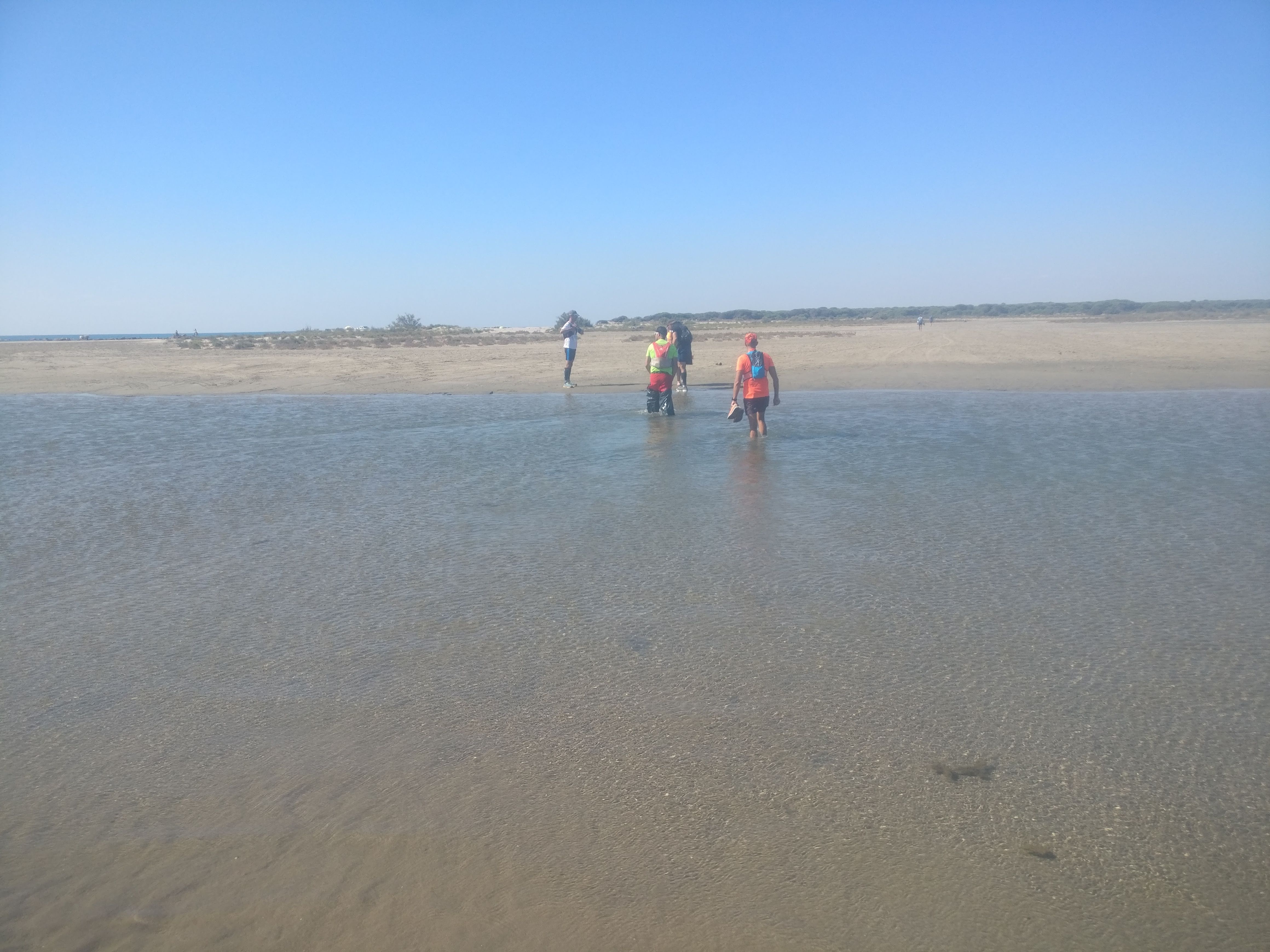
Then the serious work begins, as we reach the second beach section. It’s half past noon and the sun is scorching, reflecting on the dry white sand. The body is heavy, the ground is dry, the air parching… also, it’s incredibly beautiful around.
Deep blue sky, crystal clear water and white sand – I’m a beach runner by heart and a smile reappears in the heat. I only wish I didn’t have any shoes and could feel the earth directly, but I don’t want to risk getting irritated feet with 50 km to go.

So for a few blessed kilometers, the spirit is high and the body is cooling itself best as it can. We reach the 56th km aid station, where they tell us how far we have run and warn that the beach is ending: we’ll now only have solid ground.
I remember thinking: « so this is the state I’m in when taking the first steps of a full marathon? Sure, right on… »
60 to 80 km: Hell on Earth
We’re back in a salt marsh. With the sea gone, so is my strength boost. Just more long straight lines on a dirt road with next to no tree. Since the sun came up we didn’t go through a single shaded area.
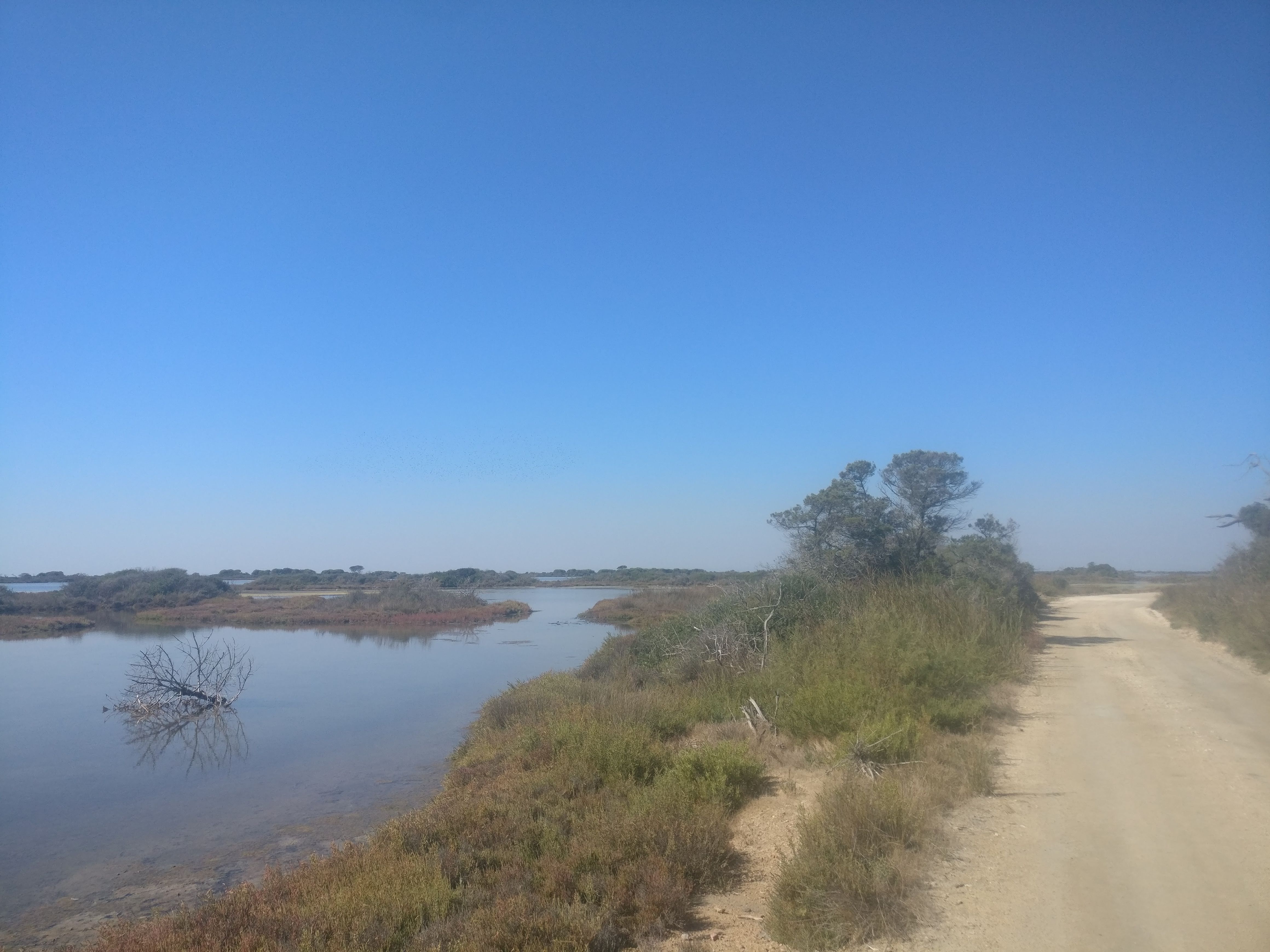
It’s a private area so we do not run into anyone: there’s one runner a few hundreds meters in front of me. He looks like he’s struggling. I know I look the same to the one behind me.
Things are starting to get really, really tough.
It’s almost 2 pm and the unforgiving sun makes it hard to think – the memories get blurry. I know I need to eat a cereal bar every 40 minutes or so, I can read the current time on my watch but it’s impossible to remember when I took the last one (10 minutes? One hour?). I have already eaten around 15 and they’re not very appealing but I have to force myself and keep eating. When my head starts to hurt I’m assuming it’s because of hypoglycemia, so I use that to time my intakes. It seems to work.
All I want to do is walk for a while, like I’m seeing some other runners do. I know I’ll probably have to at some point but if I start now with 40 km to go, when will I reach the finish line? At the aid stations walking also seemed more painful than running anyway, so I push forward.
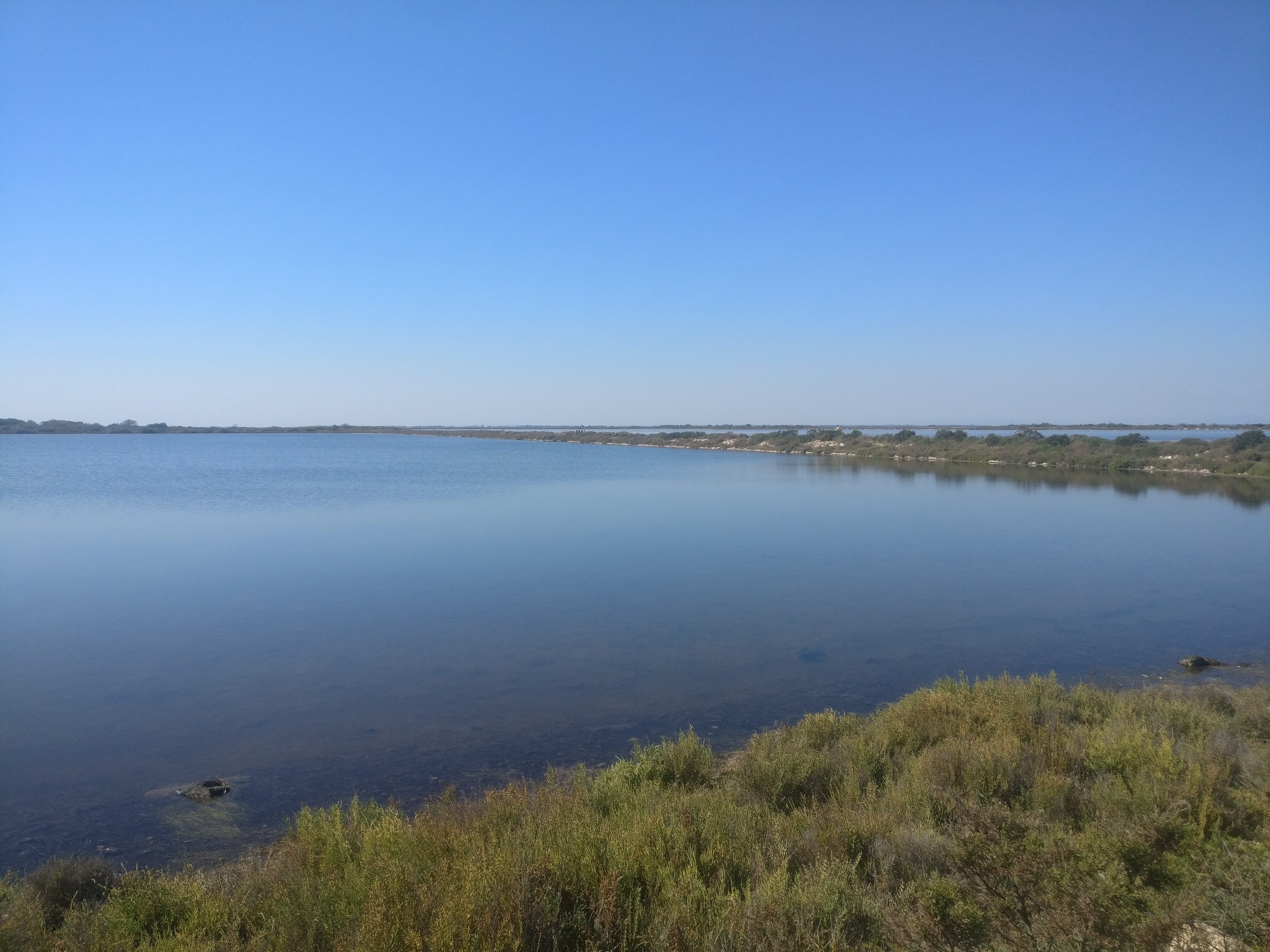
Usually in that state I would start breathing heavily and letting my mind go a bit delirious (roaming free, talking to myself, sometimes singing), which helps ease the mental pressure for a bit. But again, it might work for 15 km, and then what, I’m even more exhausted? I try to stay in control of the breath and focus on the now, to fix my tumbling stride, to not let go.
At the same time I know a run is best when you do let go and find a place where you can run for the joy of it – doesn’t have to be fast, just joyful. No point in running to fight or « win » against the trail (you won’t), trying to swallow any difficulty thrown at you with gritted teeth and a deep, serious frown.
Running needs to be light, if not in the outside form then at least it in spirit!
So I try to plug into that, forget the goal, the next aid station, everything. And it works for a short while but the sweltering heat melts my focus, time after time after time… (more training is needed!)
I cry tears of relief at the aid station at km 64 and it’s the best thing in the world. I can’t wait for doing the same thing at the next one (located on km 72) but it’s too far away: it’s hidden behind a house and just 150m before reaching it, mind completely out of sync with the body, I stop and walk.
The volunteers are kind (and a bit worried, because all other runners are red and I’m very white) and have put a bench in the shade, which I sit on and try to pick up pieces of myself and mend my spirit. After a few minutes I notice I’m hearing a song they’re playing on an old boom box, what a great idea! For the first time I grab my earphones and put on some music myself – instant relief and suddenly my mind feels clearer, connected to a time when I was not running for hours in hellish temperatures.
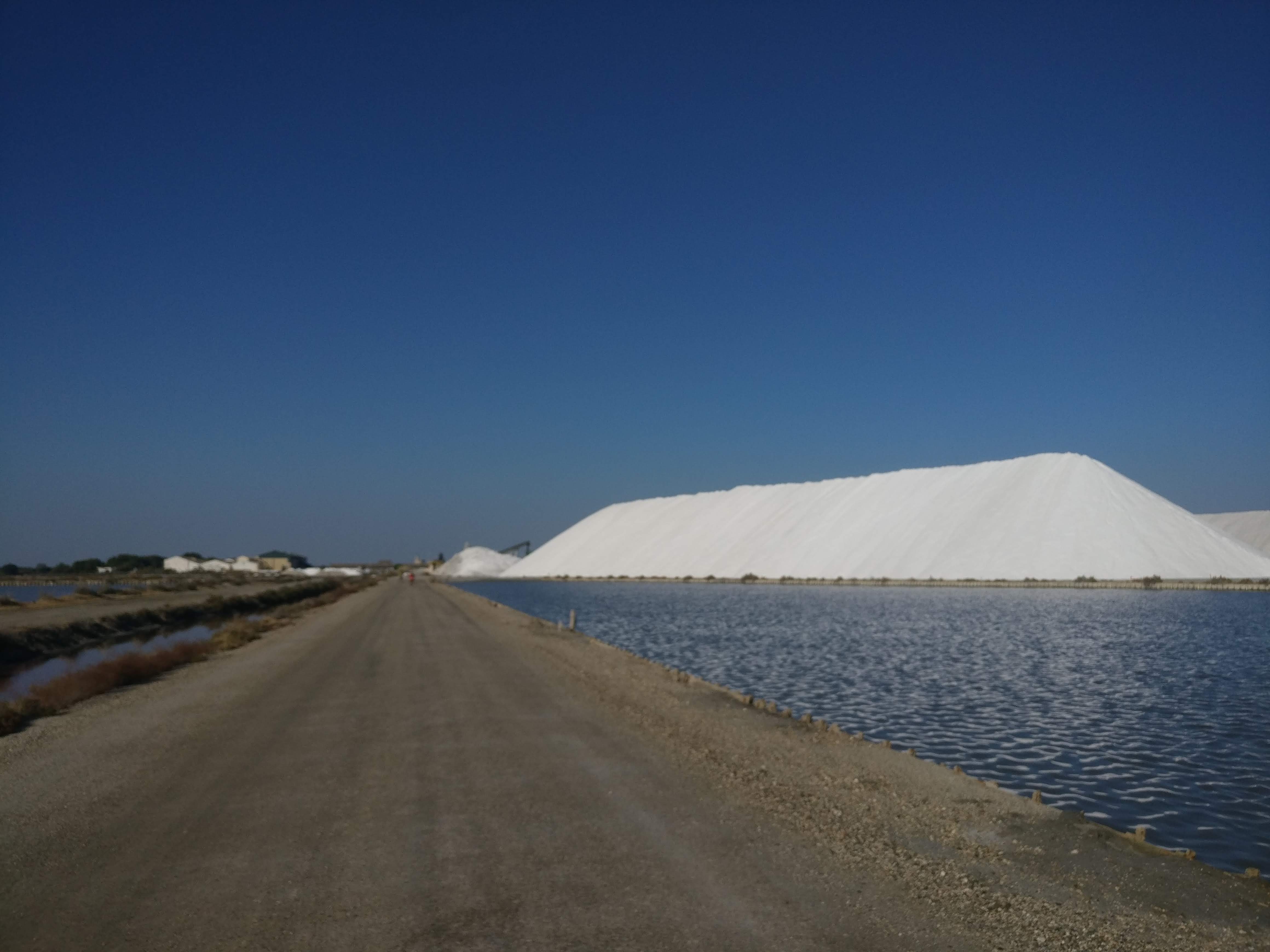
I get up and start again, running slowly and making a few breaks. I pass giant mountains of salt and reach km 75: my younger brother, who agreed to pace me for the last section on the race, is finally here!
I had been anticipating that reunion for the past 10 km, it’s both a great joy and relief. It’s also a difficult transition: after 40 km alone I suddenly have someone to talk to (and am back to no music). It breaks the monotony but I don’t have the focus to try to push through difficult times any more.
So we run for short stretches, walk for short stretches, talk a bit and move slowly through the city of Aigues-Mortes, where the second big aid station is located.
80 to 99 km: nothing left in the tank
At km 81 is that big aid station, where I was hoping to find therapists and osteopaths like in the first one – no such thing here, just some salty food and the usual tireless volunteers. We take a break but I’m starting to get frustrated with our pace – I didn’t come here to walk the whole way!
Being a bit refreshed, I discuss it with my brother and he’s – obviously – fine with me putting back some music and getting more focused. Good pacer!
We take off and suddenly I’m on a cloud. Everything is easy and I start to pick up the pace – almost 10 km/h, the hard part is over, this thing is finished in less than 2 hours!
So I go fast, fast, too fast… And after ~6 km I realize I’m getting slow again and I’m not flying anymore and I really want to stop just a minute…
Beware of the burning desire to sprint on your 85th kilometer!
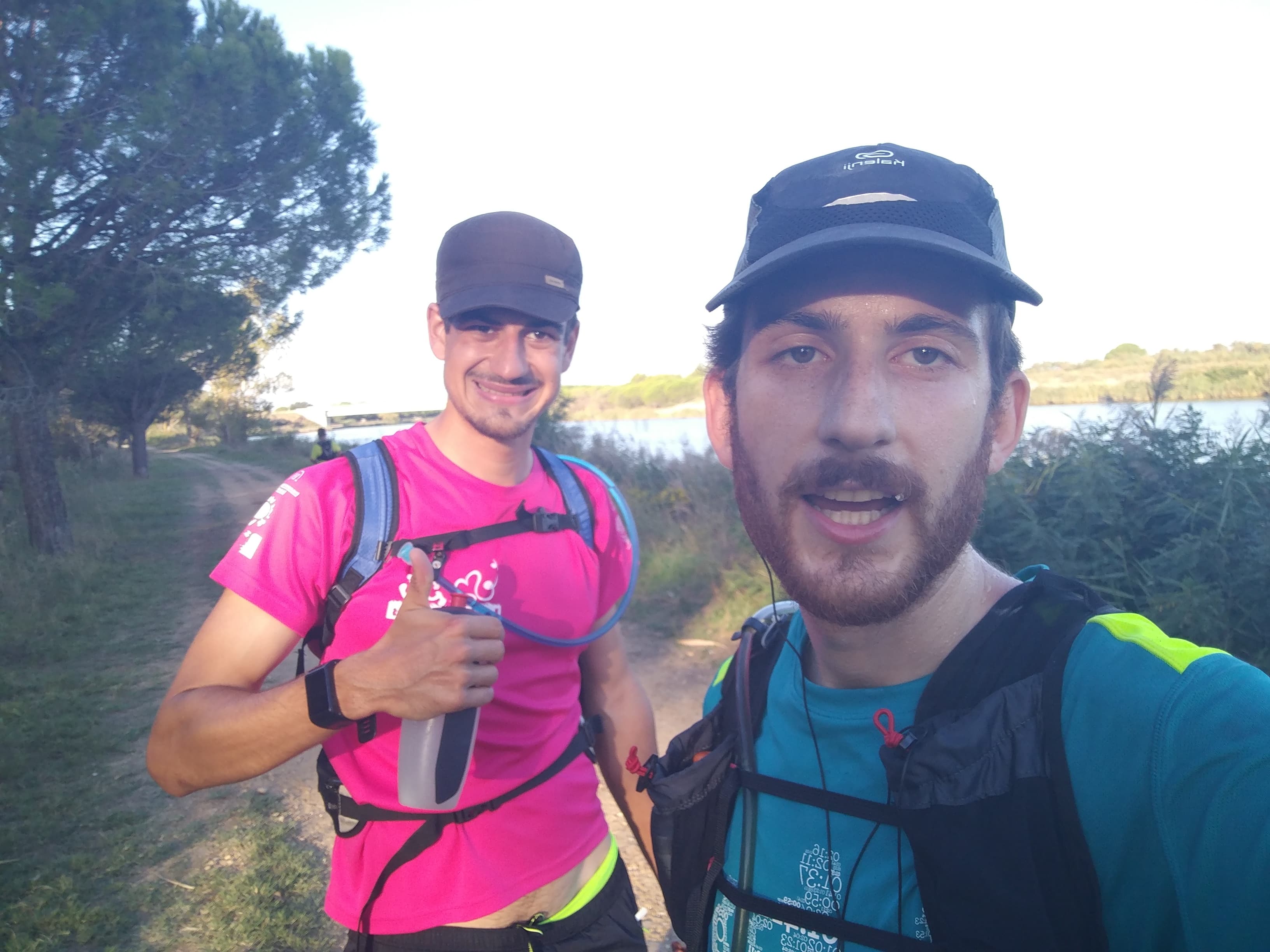
We walk a little bit. But no broken spirit this time, the sun has started to go down and now that I can think again I’m getting used to having nothing in the tank.
The trick to quickly getting back to running is jogging very slowly, almost on the spot – it’s hard for your body to refuse, that sounds easy. Then the legs get frustrated: if they’re going to run, they might as well really run.
So over a couple dozens of meters you pick up the pace and have gotten into a decent running speed, not by forcing yourself but by letting your desire to run drive you.
The joyfulness is back in running!
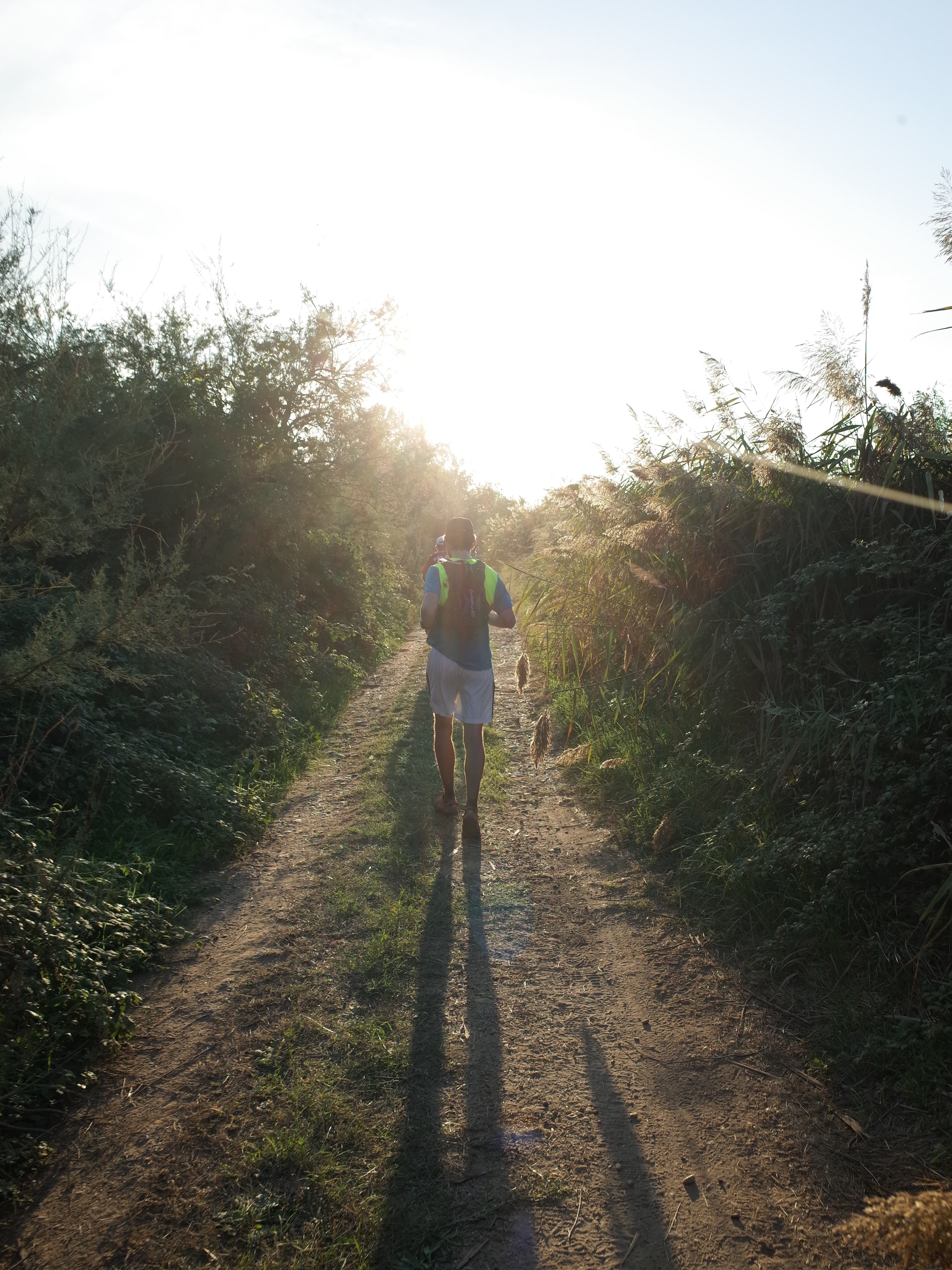
I’m getting more and more tired and the kilometers are not getting any shorter but I feel like I know better how to handle it. My brother is a great support and offers to take my bag for the last 10 km, never would have thought of that! (also technically not allowed? I still don’t take anything from him outside of the aid station, per regulation, so let’s call it a grey area)
The sun has set now, which is a help of its own – without it I enter hypothermia and my teeth start shaking if I stay motionless for more than a minute at aid stations, great motivation to get up and move! The mosquitoes also make less appealing my tantalizing fantasy of lying down in the grass.
99 to 100 km: flying
A few kilometers running, a little walking, rince and repeat… We reach the city of Vauvert, it’s now 1 km to the finish line! That’s the signal for an all-out sprinting session: picking up pace, going fast, faster, faster still, nothing matters excepts the sweet feeling of the race, no trying to save any energy any more, being sky high on endorphin.
We pass some startled volunteers who struggle to point to the correct direction in time before we reach them and finally, the jump across the finish line!
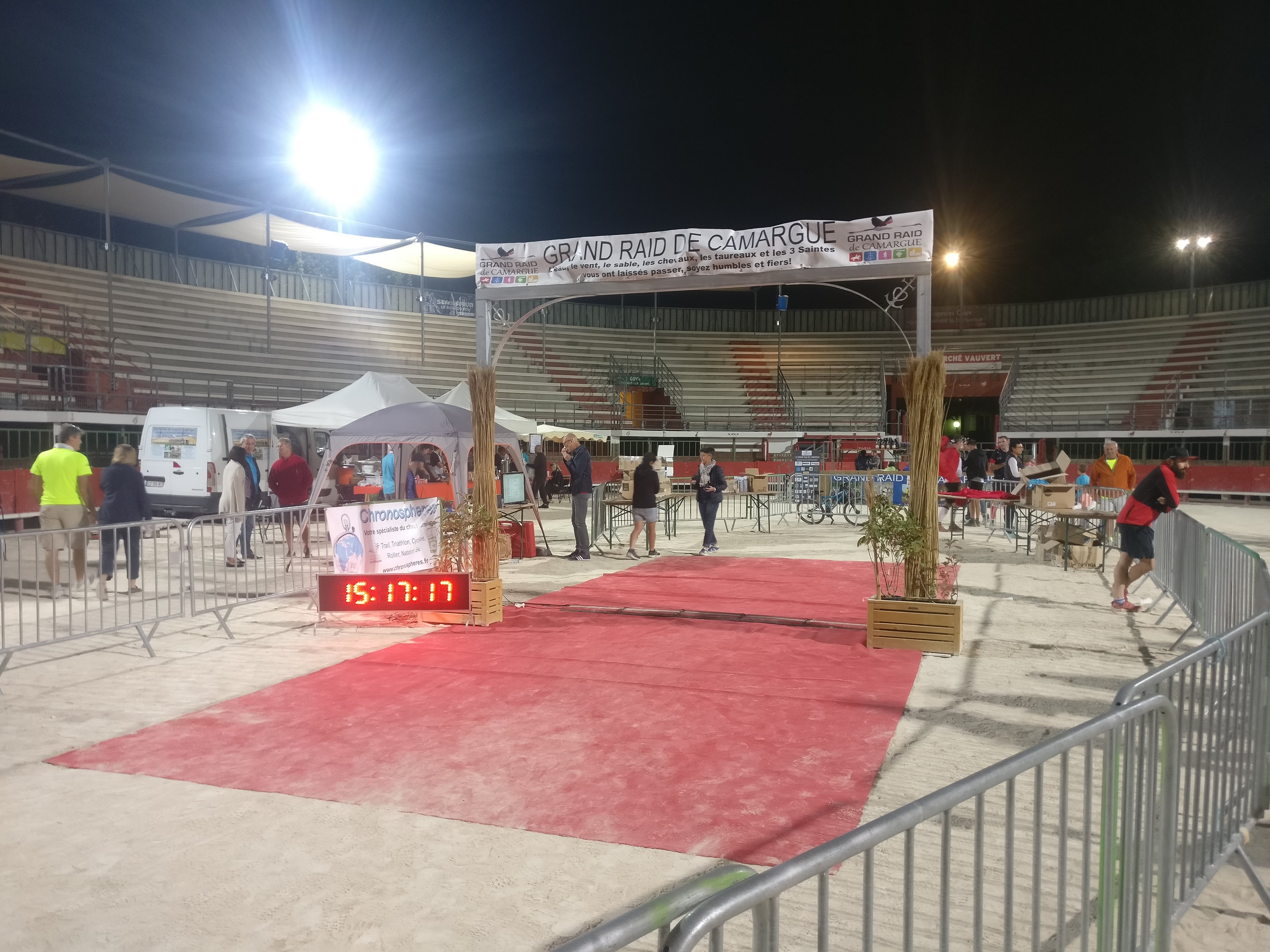
Post-race, take away and ressources
I finished in 13 hours 35 minutes, arriving around 8:40 pm, which still puts me in the first half of the finishers. The goal #0, learning stuff during a fun race, has definitely been reached.
It’s also great to have been to that place of exertion where you don’t feel like taking another step and everything is hurting but you still go and keep going for hours and for a while you are not tied to the body anymore and your spirit is free to fly. The 13.5 hours race gave me plenty of time to go there!
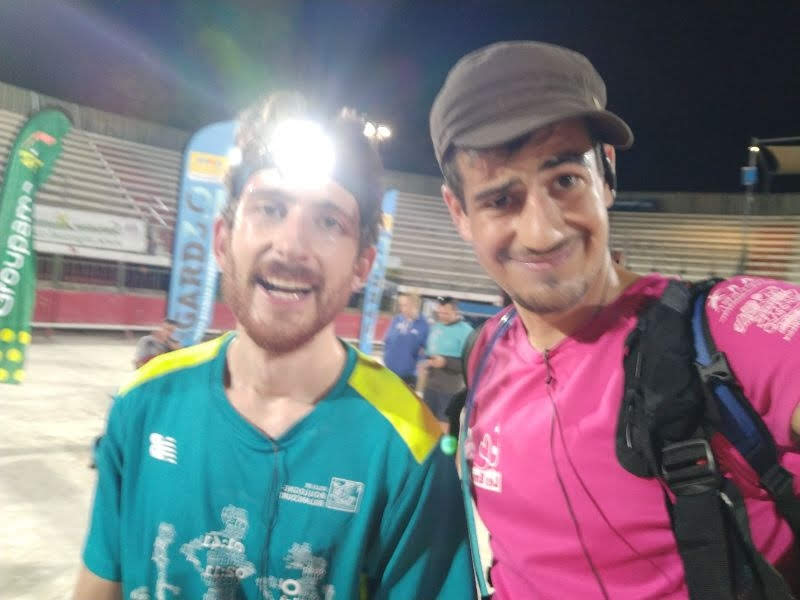
What I would change
I believe I didn’t reach my target of <12h because of mental breakdown more than anything else: I pushed myself too hard during the 60-70km stretch, refusing to slow down in the heat or walk for a minute.
At km 72 aid station my spirit was more or less broken and I couldn’t push anymore, I spent 10+min resting in each of the following aid stations – staying more than 2 minutes doesn’t change anything physically, but I needed it mentally.
If I learned to slow down and take it easier in the hottest part of the race I could have saved almost an hour and the race would have been much more fluid. Know when to push and when to be kind to yourself!
Training-wise: I only did one 58 km run in preparation, I think doing more long runs would have be very beneficial – getting more experience dealing with a tired body.
Getting some healthy meals prepared in advance would have been great to avoid getting less ideal food when the energy and motivation are low.
What worked really well
The main take away for me is the importance of having people cheering you and wishing you well. You read or hear it the speeches of many great athletes thanking coach family and friends and it’s more than a graceful gesture: in difficult times it’s a very down to earth, practical, physical kind of relief sensation. (At least it was for me.)
Countless times I thought about people who had a kind word, or I took a quick peak at the cheering messages I had received between aid stations. When everything is blurry and hurting, it really helps!
Eating vegetarian unprocessed food seems to have worked, since I was already running and feeling great the day after. (« No meat athlete » – there’s a blog and a book – and Eat and Run are both good ressources, with a wealth of running stories/advice. N=1 in the present article but you can find studies…)
Remembering why I like to run during the difficult times: I had prepared some quotes from ultrarunners that I like to read during the race and I of course lost the paper right at the starting line. But I knew some of them by heart and that helped a little.
I remember around km 80 thinking, after a while wallowing in self-pity, « Wait, it’s painful and uncomfortable but I don’t care about that stuff. Why am I beating myself up? This is a pretty fun adventure ». Self-pity will get you out of touch with the present moment (and vice-versa), no dwelling in it!
Gratitude
Again, all my gratitude to those who sent, said, asked or thought something nice, or showed a trace of interest, or just a smile on the road – you were with me for 14 hours. Many many thanks to my brother Jonathan as well, for waiting hours in that mosquito-filled area and pushing me on those final kilometers – you deserve that medal!
And of course, thanks to the other runners, to the organizing team and all the nameless volunteers generously giving time and good spirit for this Grand Raid de Camargue and making it such a generous & fun event.
See you on the next one!
https://www.strava.com/activities/1873763578
